












Saturday, July 20
7 a.m. • Pre-fair Clean-up/Set-up
Tuesday, July 23
9 - 11 a.m. • 4-H Shopping in Style, Sewing and Textile Design, and Fiber Arts Conference Judging, Fairgrounds Community Building
6 p.m. • Friends of 4-H Dinner and Public Style Revue, Iola High School
Wednesday, July 24
9 a.m. • 4-H Horse Show
2 - 6 p.m. • 4-H Static Exhibit Conference Judging 2 - 6 p.m. • 4-H Cloverbud Visit, Fairgrounds Community Building
2 - 6 p.m. • Set-up 4-H Club Exhibits (Booth, Banner, Billboard, Hay Bale, & Foods Table)
5 - 7 p.m. • Open Class Entries Received, Recreation Building
5 - 7 p.m. • Set-up FCE Exhibits
Thursday, July 25
7 a.m. - 12 p.m. • Unload Beef, Sheep, Swine, Goats, Horse, Rabbit & Poultry
7 a.m.
• Breakfast- proceeds to bene t Miss Chelsea Dance Academy - North Community Building
8 a.m. - 12 p.m. • Open Class Entries Received, Recreation Building
8 a.m. - 10 p.m. • Baby Barnyard
8 - 10 a.m. • Swine Weigh-in
10 - 11 a.m. • Sheep & Meat Goat Weigh-in
11 a.m. - 12 p.m. • Beef & Bucket Calf Weigh-in
1 - 3 p.m. • 4-H Family and Consumer Sciences (FCS), Horticulture, and Photo Judging Contests
6 p.m. • Community Building Open to View Exhibits
6 p.m. • 4-H Swine Show
Friday, July 26
7 a.m. • Breakfast, proceeds to bene t Miss Chelsea Dance Academy - North Community Building
9 a.m. - 9 p.m. • Community Building Open
8 a.m. - 10 p.m. • Baby Barnyard Open
9:30 a.m. • 4-H Bucket Calf Show followed by Dairy Show
12 p.m. • Live Entertainment through the day - Stage east of Recreation Building
1 - 2 p.m. • Barnyard Olympics
3 - 5 p.m. • Face Painting & Balloon AnimalsRecreation Building
6 - 8 p.m. • Kiwanis Kiddie Train, east side of Baby Barnyard
6 p.m. • 4-H Meat Goat Show followed by Sheep Show
6:30 p.m. • Mutton Busting Registration - Limited to 30 contestants
7 p.m. • Mutton Busting, Rodeo Arena
8 p.m. • McKellips URA/MRCA Rodeo Admission $5 (Cooler fee $20, must be 48 qt or smaller, no glass)
9 p.m. • Live Band - Fast Times - Stage east of Recreation Building
11 p.m. • Live Band - The Vincents - Stage east of Recreation Building
Saturday,
7 a.m. • Allen County Farm Bureau (free will donation) proceeds to bene t End Hunger project, Kansas Farm Bureau Food Security Initiative
8 a.m. • Iola Mustang Cross Country Alumni Run TBD • Sandy Hooves Sand Volleyball Tournament
9 a.m. - 3 p.m. • 1st Annual Peddlers Craft FairRiverside Park
9 -11 a.m. • Farmer Market - North of Pool
9 a.m. • Gale Ritter Pedal Pull - East of Recreation Building (sponsored by Farm Bureau)
9 a.m. - 9 p.m. • Community Building Open
9 a.m. • 4-H/FFA Rabbit Show followed by 4-H/FFA Poultry Show, Baby Barnyard
9 a.m. • Youth Livestock Judging Contest
10 a.m. - 6 p.m. • The Axe Shedde (Axe Throwing Trailer)
11 a.m. - 12 p.m. • 4-H Demonstrations - Stage east of Recreation Building
11 - 11:30 a.m. • Blueberry Pie Contest RegistrationRecreation Building
11:30 a.m. • Blueberry Pie Contest Judging
12 - 4 p.m. • Face Painting & Balloon AnimalsRecreation Building
12 p.m. • Live Entertainment through the day - Stage east of Recreation Building
6 p.m. • 4-H/FFA Beef Show
6 - 8 p.m. • Kiwanis Kiddie Train, east side of Baby Barnyard
6:30 p.m. • Mutton Busting Registration - Limited to 30 contestants
7 p.m. • Mutton Busting, Rodeo Arena
8 p.m. • McKellips URA/MRCA Rodeo, Admission $5 (Cooler fee $20, must be 48 qt or smaller, no glass)
9 p.m. • Live Band - The Vincents - Stage east of Recreation Building
9 - 10 p.m. • Static Exhibits released from Community Building
Sunday, July 28
7 a.m. • Breakfast (proceeds to bene t Miss Chelsea Dance Academy) - North Community Building
9:30 a.m. • Round Robin Contest
12 p.m. • Purple Ribbon Pictures and Static Awards Presentation
1 p.m. • Clean-up of Community Building and Fairgrounds and all non-sale livestock released
5:30 p.m. • Livestock Buyer Dinner, Community Building by Baby Barnyard
6:30 p.m. • 4-H/FFA Livestock Premium Auction, Show Arena
Final fairgrounds cleanup will be held immediately following the premium auction.

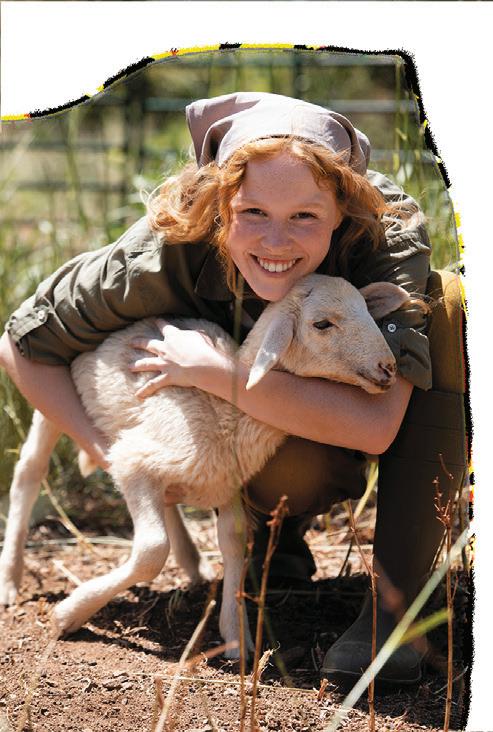



President: Ryan “Bo” Garrett • Vice President: Lori Stone • Secretary: Linda Garrett Treasurer: Christine Tholen
Marie Barclay, Carol Crawford, Larry Crawford, Andi Garrett, Chelsea Lea, Ann Lea Questions? Call 620-365-0622
1. Fair Entries

a. All entries must be made online. Please visit http:// allencounty-openclass. fairentry.com for all entries. If you do not have internet access, there will be computers available when we receive entries at the recreation building Wednesday, July 24 and Thursday, July 25.
b. Livestock (beef, sheep and dairy) must have entries entered two weeks prior to the opening of the fair.
c. All Open Class exhibits must be in place by 12 p.m. Thursday. 4-H should check under departments when exhibits need to be in place.
2. Stalls and pens must be kept clean at all times. Arrangements for cleaning of pens should be done prior to removal of animals from the fairgrounds. An exhibitor who fails to clean their pens and general area may be subject to forfeiture of premiums, all or part. Assessment of any penalties will be made by the department superintendent.
3. Every 4-H steer may be mouthed. Determination as to whether steer entries fall within desired age limits for show steers will be based only on the development of the teeth. Any steers that, in the opinion of the official in charge, have their
wear will be excluded from entry in show.
4. All livestock must be typical of the breed they represent.
5. All livestock except horses shall be owned by exhibitors from Allen, Woodson, Bourbon, Anderson, Coffey, Neosho, Wilson and Linn counties.
6. Four (4) or more animals per breed must be shown before a champion ribbon is awarded.
7. Horses are to be ridden in the arena area only. Horses are not permitted on the dike or in any area south of the livestock barns. Violators of this rule will be asked to leave the fairgrounds.
8. Persons bringing property of any kind upon the fairgrounds, either as exhibitors or otherwise, do so at their own risk. No liability shall arise from any supervision over exhibits exercised by the association or its employees, but every precaution will be used to protect such property.
9. ALL EXHIBITS MUST BE KEPT ON THE FAIRGROUNDS DURING THE FAIR.
10. No exhibitor shall show more than two entries in the individual classes and no more than one entry in the group classes. No entry shall compete in both breeding and market or feeder classes.
11. Where an exhibitor has little or no competition, the
entries shall be judged, and premiums awarded according to the merit of the exhibit.
12. The right is reserved to prorate premiums if funds are insufficient to pay in full.
13. See various departments for special rules applicable.
14. Exhibitors must claim their property at the close of the fair. No exhibits will be removed or disarranged prior to Sunday at 8 p.m., nor without proper identification of the property. No premiums will be paid at checkout. Premiums will be available Monday at 8 a.m. All unclaimed money will become property of the Fair Board on October 3.
15. No sexual signs of any form, no obscenity on t-shirts, stickers or posters, etc. on the fairgrounds.
16. The management of the fair reserves to its board the final rights to interpret the rules and regulations and arbitrarily settle and determine all matters, questions and differences thereto. When no rule appears to cover a given situation, the board will make such rules as are necessary and determine its application to the situation. The rules and regulations of the Kansas State Fair will be used as a guide in matters not otherwise covered in this book.
17. The Community Building
will be closed to the public Thursday from 7 a.m. until 6 p.m. for exhibit entry and judging.
18. Commercial booths can be set up Thursday evening from 5-7 p.m.
19. Rollerblades and skateboards are prohibited in fair buildings.
20. No political or religious material can be distributed without also having a booth at the fair.
21. No RV’s or campers should be on the fairgrounds until Wednesday, July 24.
22. All stock trailers after unloading shall be parked in the designated area north of the arena (grassy area) during the fair.
All animals are subject to examination by the exhibition staff or their representatives and shall be free of clinical signs of infectious or contagious disease.
2. BEEF and DAIRY: The Kansas Animal Health Department (KAHD) requires no test on cattle of Kansas origin. Cattle determined by exhibition staff to have lesions of ringworm, warts or infected with mange will not be permitted to exhibit.
3. HORSES: All horses will be subject to inspection at the time of unloading. A valid VS Form 10-11 showing evidence of a negative Equine Infectious Anemia (Coggins) test conducted by a stateapproved laboratory within 12 months prior to exhibition is recommended but not required by KDAH.
4. SHEEP and GOATS: All animals with signs of sore mouth, active fungus (ringworm and club lamb fungus) infection, warts or infested with mange will not be permitted to exhibit. All must be identified with an
official USDA premise ID tag.
5. POULTRY: All poultry, except waterfowl, must show proof that they are clean of pullorum typhoid by originating from a P-T clean flock or show a negative P-T test withing 90 days of exhibition.
6. No inhumane or unethical treatment of animals will be tolerated. Violators may be sent home.
7. The use of any tranquilizer, sedative, analgesic, or chemical restraint in association with exhibit or sale is prohibited.
Sheep Superintendent
Sherry Elmenhorst
Swine Superintendent Jeff Nemecek
Beef Superintendent
Wes Stone
Dairy Superintendent Kristian Resco
Division Rule: Four or more animals of the same breed and sex must be shown before a breed champion ribbon is awarded.
1. All Open Class Livestock must be in place by noon Thursday.
2. Ribbon premiums will be awarded to the top three of each class: 1st Place: $5.00, 2nd Place: $4.00, and 3rd Place: $3.00.
3. Special Awards will be given to: Champion Ram, Champion (Beef) Bull, Champion (Beef) Female, Champion (Dairy) Bull, Reserve Champion (Dairy) Bull, Champion (Dairy) Cow, Champion (Dairy) Heifer, Supreme Champion (Dairy) Female (All Breeds), Champion Meat Goat, Champion Swine.
Sheep: Ram, Ewe, Market Lamb
Beef Cattle: Bull, Heifer
Dairy Cattle: Bull, Heifer, Cow
Meat Goat: Market, Breeding
Swine: Market, Breeding
Superintendent JD Wilks
1. ONLY one pen of birds per class.
2. All poultry must reeive a negative pullorum typhoid test.
3. Poultry are to be in place by noon Thursday.
Rhode Island Reds (SC)
Production Reds
Leghorns, White (SC) Australorp, Black Plymouth Rocks, White Wyandotte, White
New Hampshires
All other standard breeds Ducks: List names of breed on entry form.
01 *Standard Breeds, Large Fowl — One young bird, either sex.
02 *Standard Breeds, Large Fowl — One old bird, either sex.
03 *Standard Breeds, Bantams — One young bird, either sex.
04 *Standard Breeds, Bantams — One old bird, either sex.
05 *Production Pullets — Pen, 3 standardbred, crossbred or inbred pullets to be judged on egg production qualities only.
06 Production Hens — Pen, 3 standardbred, crossbred or inbred hens to be judged on egg production qualities only.
07 Dual Purpose Pullets — Pen, 3 such as Rhode Island Reds, New Hampshire, Plymouth Rocks, etc.
08 Dual Purpose Hens — Pen, 3 such as Rhode Island Reds, New Hampshire, Plymouth Rocks, etc.
09 Meat – Type Chickens — Pen, 3 standardbred, crossbred or birds of the same sex to be judged on meat production qualities only.

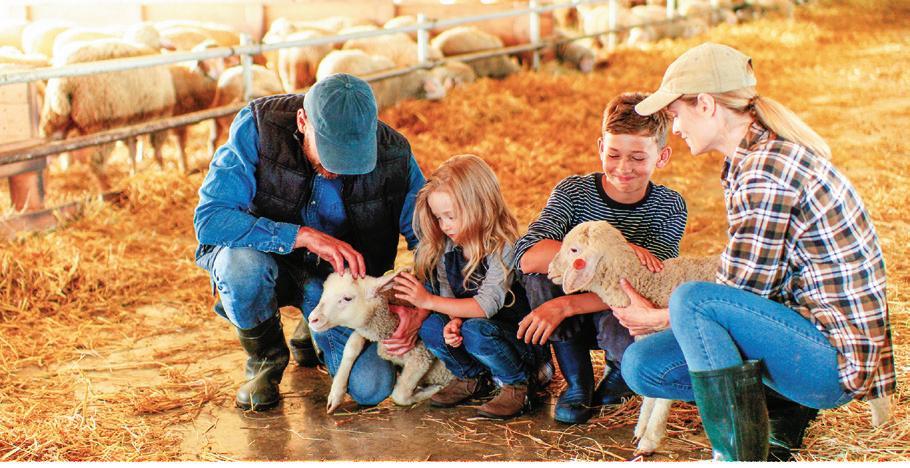

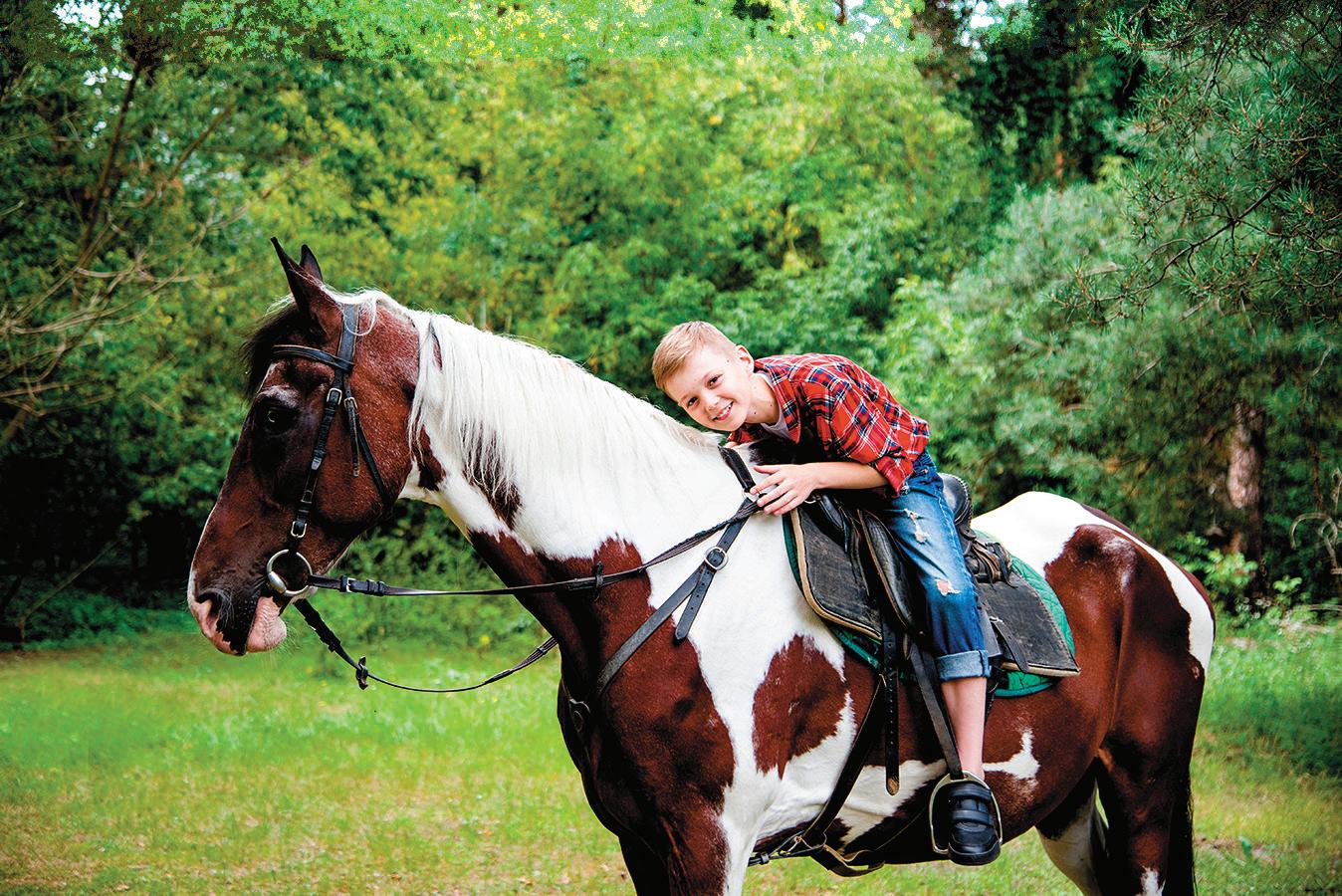



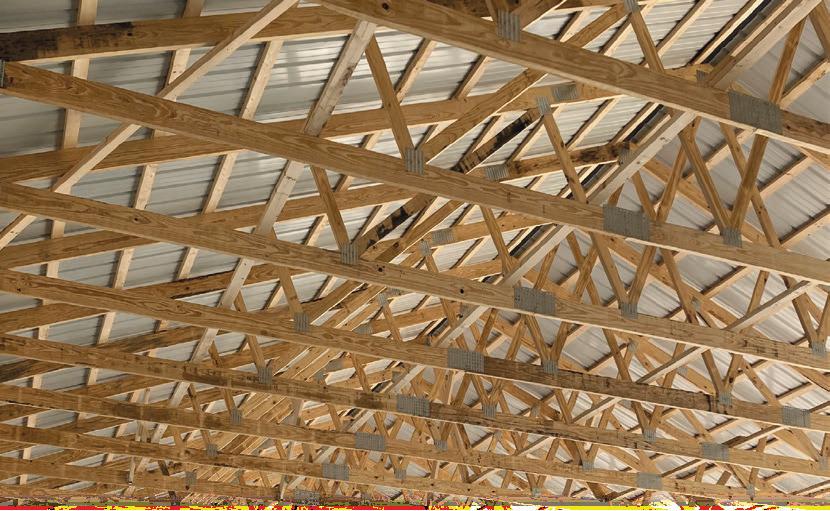


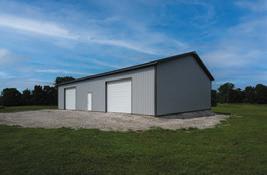



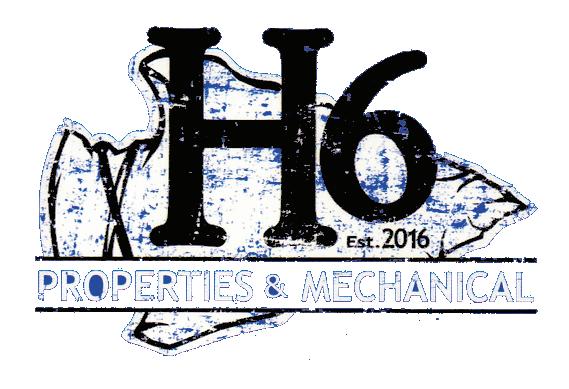




10 *Turkeys, all breeds — Pen, 1 bird of either sex.
11 *Ducks, all breeds — Pen, 1 bird of either sex.
12 *Geese, all breeds — Pen, 1 bird of either sex.
13 Pen of 25 Quail.
14 Pigeons (May enter two birds per breed.) Name the breed.
*These classes will be judged primarily on the basis of exhibition qualities as described in “The American Standard of Perfection,” American Poultry Association, P.O. Box 70, Cushing, OK 70423.
1st $2.50 2nd $2.00
Each exhibitor may exhibit up to 2 entries (up to 4 rabbits).
2. Rabbits MUST be permanently tattooed in the left ear for identification. It is not required to tattoo meat class.
3. Rabbits must have a cage number marked in the right ear.
4. Rabbits are to be in place by noon Thursday.
5. Classes will be judged primarily on the basis of exhibition qualities as directed in “The Standard of Perfection” produced by The American Rabbit Breeders Association Inc.
CLASSES
01 Junior Doe – under 6 months of age
02 Junior Buck – under 6 months of age
03 6/8 Doe – 6 to 8 months of age (6 class rabbits only)
04 6/8 Buck – 6 to 8 months of age (6 class rabbits only)
05 Senior Doe – over 6 months of age (4 class rabbits)
06 Senior Buck – over 6 months of age (4 class rabbits)
07 Senior Doe – over 8 months of age (6 class rabbits)
08 Senior Buck – over 8
months of age (6 class rabbits)
(Separate division for CITIZENS 70 OR OLDER — ENTRIES AND RULES SAME FOR DIVISION & CLASSES)
(Only 2 entries per person per class)
1. RECIPE MUST BE INCLUDED WITH ENTRY.
2. Owner must state whether to sell or pick up after judging on Thursday. If not indicated, it will be sold. Must be picked up by 7 p.m. on Thursday or will be sold. Cannot be removed before judging.
3. Only 2 entries per person per class.
4. All products that are awarded a special award will be sold.
01 Cake, unsliced
02 Angel food, unsliced
03 Chiffon
04 Candy (3)
05 Cookies (3), drop
06 Cookies (3), bar
07 Cookies (3), molded
08 Cookie (3), other
09 Cupcakes (3), iced
10 Cupcakes (3), uniced
11 Fruit Pie
12 Quick Bread
13 Whole Wheat Bread Loaf
14 Yeast Bread Loaf
15 Fancy Yeast Bread
16 Yeast Rolls (3)
17 Muffins (3)
18 Other 1st - $2.50
SPECIAL AWARDS:
Best Loaf Yeast Bread-GALS FCE. $5.00
Best Whole Wheat BreadCarol’s Corner Cuts. $5.00
Best Loaf Fruit or Nut Quick Bread-Carol’s Corner Cuts. $5.00 Best Cake or Cupcakes-GALS FCE. $5.00
BAKED PRODUCTBAKED PIE CONTEST: BLUEBERRY PIE ONLY
Superintendent Linda Garrett
Enter pie Saturday, July 27 at 11 a.m.; judging begins at 11:30 a.m. Community Building. Open to all.
1. Winning entries become property of the Allen County Fair Board.
2. Each contestant must bring a copy of the pie crust and pie filling recipes. The recipes will be returned at the end of the contest.
3. No fresh fruit pies will be accepted if they have not been properly preserved.
4. For questions, call 620-2282101.
SPECIAL AWARD: Garrett Family
(Separate division for CITIZENS 70 OR OLDER — ENTRIES AND RULES SAME FOR DIVISION & CLASSES)
(Only 2 entries per person per class)
1. Each exhibit must be marked plainly with the name and address of the exhibitor by means of a tag that can be removed.
2. All exhibits must represent the work of the current year. Management reserves the right to reject exhibits that have been shown in prior years.
Sewing Classes
01 Garment
02 Fashion Accessories
03 Other Cross Stitch Classes
01 Counted, framed 8”x10” or under
01b Counted, framed over 8”x10”
02 Stamped, frame 8”x10” or under
02b Stamped, framed over 8”x10”
03 Miscellaneous Knitting Classes
01 Blanket
02 Hat 03 Other Crocheting Classes
01 Blanket
02 Household Accessory 03 Other 04 Garment
Needlepoint Classes
01 Miscellaneous 02 Plain 03 Plastic Canvas Afghan Classes 01 Crochet 02 Knit 03 Throw 04 Other Household Accessories Classes
01 Hand Embroidery
02 Machine Embroidery 03 Ceramics
04 Miscellaneous Quilt Classes
01 Applique, hand quilted
02 Applique, all others
03 Embroidered, hand quilted
04 Embroidered, all others
05 Baby Quilt, hand quilted
06 Baby Quilt, all others
07 Lap Quilt, hand quilted
08 Lap Quilt, all others 09 Patchwork, hand quilted
10 Patchwork, all others 11 Pieced
12 Wall Hanging, Crib, 24” and above
13 Wall Hanging, Crib, under 24”
14 Quilt Tops Only
15 Machine Quilted 16 Pillows 17 Table Decorations 18 Other Miscellaneous Classes 01 Household accessories
02 Item made from recycled material 03 Other 04 Jewelry
05 Scrapbooking (one page only) 06 Ornaments
Youth 15 Years and Younger Classes
01 Children’s clothing 02 Knitted Article
Best Afghan-GALS FCE. $5.00 Best Hand-Quilted Quilt-GALS FCE. $5.00
Needlepoint and Cross StitchGarrett Family and Framing. 1ST $5.00
Youth Division, Cross-StitchGarrett Family and Framing. 1ST $5.00
Youth Division, Best JewelryGALS FCE. 1ST $5.00
Senior Division, Best Domestic Arts-Happy Hearts FCE $5.00
which has been constructed, repaired, reconditioned or renovated.
2. All exhibits must be clean and in a presentable condition for show purposes.
3. All exhibits must be in place by 12 p.m. Thursday. Entries may be picked up between 7-9 a.m. Monday.
4. Display from FFA Chapters competing for chapter awards will consist of five pieces of equipment or machinery, one of which may be a repair job, and will be judged collectively, one group against another in competing for the following prizes:
GROUP DISPLAY OF 5 PIECES
1ST $30 2ND $20
5. Additional projects may be entered in the individual competition but only five may be used as a Chapter display and must be designated at the time of entry.
6. Individual pieces of equipment will also be judged, and the pieces of equipment constructed in each class will receive the following awards: OPEN CLASS
7. FFA members must pick up entry forms and return them to the extension office
Individual Piece of Equipment, Ages 18 & Older Classes
01 Less than $500
02 More than $501
Individual Piece of Repair Work, Ages 18 & Older Classes
01 Less than $500
02 More than $501
Crawford
(Only one entry per person per class)
1. Exhibits in this department will be shown outdoors. Displays in this department will consist basically of examples of laborsaving devices and/or examples of farm machinery and equipment
Individual Piece of Equipment, Ages 13-17 Classes
01 Less than $500
02 More than $501
Individual Piece of Repair Work, Ages 13-17 Classes
01 Less than $500
02 More than $501
Individual Piece of Repair
Work, Ages 12 and Younger Classes
01 Less than $500
02 More than $501
Individual Piece of Repair
Work, Ages 12 and Younger Classes
01 Less than $500
02 More than $501
1ST $5.00 2ND $3.00
(One entry per person per class)
Ages 13 and Younger Classes
01 Rod Welding
02 Wire Welding
03 Brazing
Ages 14 and Older Classes
01 Rod Welding
02 Wire Welding
03 Brazing
1ST $3.00 2ND $2.00
(Only 2 entries per person per class)
1. Exhibits in this department are any project that a child has made in any of the categories below.
01 Lego Display, Ages 7 & Younger
02 Lego Display, Ages 8-12
03 Lego Display, Ages 13-18
1ST $2.50 2ND $2.00
(Only 2 entries per person per class)
1. Premiums will not be awarded unless the article is worthy and requirements met.
2. If any produce should spoil before the end of the fair, it will be disposed of.
3. Entries will be judged
Thursday at 4 p.m.
4. Garden Display & Green Thumb Display: Each exhibitor in this class will be limited to four square feet of space. Exhibit consists of five or more different fresh vegetables. Canned vegetables are not accepted. Only one variety of a specific vegetable may be exhibited. The numbers of the five or more vegetables to be exhibited are as follows:
Large Vegetable — One each: Watermelon, Pumpkin, Cabbage, Squash, Eggplant, Cantaloupe or similarly sized vegetable.
Medium Vegetable — Five each: Cucumbers, Tomatoes, Carrots, Beets, Onions, Peppers, Parsnips, Okra, Potatoes or similar vegetables.
If small fresh vegetables, such as green beans, are used as one of the five different vegetables, a dozen is suggested for a good display. Shelled vegetables should not be exhibited. Quality and condition of the exhibit will be considered. Choose vegetables for exhibits that will hold up well during the fair. Avoid overripe or over-mature specimens. Those that are slightly under-ripe or slightly immature when picked may last longer.
Garden Display Exhibits will be judged: 40 points for quality, 40 points for quantity, 20 points for arrangement or display. Green Thumb Display will be judged: 40 points for quality, 30 points for quantity, 30 points for creativeness of display.
5. Vegetables (Bunches of 5): Tops should be cut off between 1’’-2’’ in length. Vegetables will keep better if covered with plastic.
Legume Seed Classes
(1 gallon in wide mouth jar)
01 Soybean seed (oil variety)
02 Other
Grain Classes (1 gallon jar)
01 One-gallon jar
Sheaf Classes
01 Four-inch sheaf
02 Ten stocks
Corn Classes
01 10 Ears
02 100 Ears
03 Popcorn 04 Other
Grain Sorghum Classes (10 head)
01 Any variety
Bundle of Hay Classes (4-inch flake)
01 Alfalfa hay
02 Prairie hay
03 Other
Potato Classes (16 Potatoes)
01 White
02 Red 03 Other variety
Tomato Classes (5 tomatoes)
01Small, cherry or ornamental
02 Large, any variety
03 Yellow tomatoes
04 Other
Onion Classes (5 not skinned)
01 Yellow
02 White
03 Other
Summer Squash Classes (1 squash)
01 Zucchini
02 Small crook neck
03 Any other variety
Winter Squash Classes (1 squash)
01 Acorn
02 Large crook neck striped
03 Butternut 04 Spaghetti 05 Other
Vegetable Classes
01 Table beets (Bunches of 5)
02 Turnips (Bunches of 5)
03 Carrots (Bunches of 5)
04 Parsnips (Bunches of 5)
05 Head of cabbage (1)
06 Snap beans (2 dozens)
07 Okra (6)
08 Eggplant (2)
09 Sweet potatoes (3)
10 Slicing cucumbers, under 6’’ (5)
11 Slicing cucumbers, 6” and over (5)
12 Other cucumbers (5)
13 Sweet peppers (5)
14 Hot peppers (5)
15 Peppers, other (5)
16 Other
Watermelon Classes
01 Long melon
02 Round melon
Pumpkin Classes
01 Field pumpkin
02 Pie pumpkin
03 Other
Cantaloupe Classes (1 cantaloupe)
01 Any variety (large)
02 Any variety (small)
03 Other
Melon Classes
01 Honeydew melons
02 Musk melon
Garden Display Classes
01 Garden display (See rule #4).
02 Green Thumb display - Must contain 5+ vegetables (refer to #4 Garden Display), 1 potted plant and 1 cut flower arrangement
SPECIAL AWARDS:
Best Garden Display of at least five different vegetables with a minimum of 3 of each item-GALS
FCE…. $5.00
Largest Pumpkin-Allen County Fair Association…$5.00
Largest Watermelon-Allen County Fair Association…$5.00 Bunch of 5 Largest Vegetables-Allen County Fair Association…$5.00
Best Green Thumb DisplayGarrett Family…$50.00
Garden Display
FINE ARTS
Superintendent
(Only 2 entries per person per class)
1. All 2-Dimensional work must be ready to hang or in a plastic bag.
2. Photographs must be no smaller than 7’’x9’’ and no larger than 8’’x10’’.
3. Photographs must be mounted on a mat or heavy poster board no larger than 11’’x13’’ allowing a one-inch border on each side. Sequence photos should be smaller in size and must fit on one mounting board no larger than 11”x13”.
4. Exhibitor’s name and address should be written on the back of the mat.
5. Photographs must be displayed in a 2-gallon plastic bag.
6. No photographs will be accepted in frames.
7. All work will be judged on the basis of originality.
8. Entries are limited to amateurs. Judges are instructed not to award premiums unless the article is worthy of award.
9. No articles will be exhibited in competition unless made within the past two years and not previously exhibited at this fair.
10. Winner of the Best Black & White Photograph and Best Landscape Photograph will have their photo framed and hung throughout the Heartland Meadows facility and must give ownership of the photo to the facility to be eligible for the $20 prize.
Two-Dimensional Artwork, Ages 18 & Older Classes
Two-Dimensional Artwork, Ages 13-17 Classes
Oil
Watercolor
Mixed Media
Pencil/Charcoal
Pen and Ink
Any Material
Acrylic
Pastels 09 Other
Two-Dimensional Artwork, Ages 6-12 Classes 01 Watercolor or Tempera 02 Pencil or Pen and Ink 03 Mixed Media
From any Material 05 Paint by Number
Pastels
Other
Two-Dimensional Artwork, Ages 5 & Younger Classes 01 Watercolor or Tempera
Pencil or Pen and Ink
Mixed Media
From any Material
Paint by Number 06 Other
Handcrafted Glass, All Ages Classes
01 Two Dimensional Stained Glass 02 Glass Etching and/or Engraving 03 Other
Photography, Ages 12 & Younger Classes
Portraits
Animals
People
Landscapes
Nature/Flowers 06 Black and White 07 Special Effects 08 Computer Manipulated
Action 10 Miscellaneous
Photography, Ages 13-17 Classes
Portraits
Animals
People
(Separate division for CITIZENS 70 OR OLDER —
06 Black and White
07 Special Effects
08 Computer Manipulated
09 Action
10 Miscellaneous Photography, 18 & Older Classes
01 Portraits 02 Animals 03 People 04 Landscapes 05 Nature/Flowers
06 Black and White
07 Special Effects
08 Computer Manipulated
09 Action
10 Miscellaneous
1ST $2.50 2ND $2.00 SPECIAL AWARDS:
Best Two-Dimensional Artwork (Ages 18 & Over)-GALS FCE. $5.00
Best Two-Dimensional Artwork (Ages 17 & Younger)-GALS FCE. $5.00
Best Animal PhotographyGALS FCE. $5.00
Best Landscape PhotographyGALS FCE. $5.00
Best Overall PhotographyHappy Hearts FCE. $5.00
Best Black & White PhotographHeartland Meadows Facility.
$20.00, provided the photo becomes property of Heartland Meadows Facility.
Best Landscape PhotographHeartland Meadows Facility.
$20.00, provided the photo becomes property of Heartland Meadows Facility.
1ST $2.50 2ND $2.00
Superintendent Peggy Luken
(Separate division for CITIZENS 70 OR OLDER — ENTRIES AND RULES SAME FOR DIVISION & CLASSES)
(Only 2 entries per person per class)
1. All exhibits must be on the grounds by 12 p.m. Thursday, July 28 and no deviation from this rule.
2. In case of little or no competition, entries will be judged, and prizes awarded, on merits of exhibits.
3. For amateur growers only.
4. Judging will be on arrangements, conditions of quality of flowers and containers.
5. Flowers will be judged Thursday at 4 p.m.
Kansas State Flower, The Wild Sunflower Classes
01 Best arrangement of cut Wild Sunflower
02 Wild Sunflower Plant (put roots in bag)
03 Tame Sunflower Plant (put roots in container)
04 Largest Sunflower Head
05 Sunflower Head (12 yrs. & younger only)
(Add no extra foliage to flower)
01 Dahlias, 6’’ and over (1 in bottle)
02 Dahlias, 5’’ and shorter, (1 in bottle)
03 Daisies (5 in bottle)
04 Dianthus (3 in bottle)
05 Gladiola (1 in bottle)
06 Marigolds, Dwarf (5 in bottle)
07 Marigolds, Medium (3 in bottle)
08 Marigolds, Large (1 in bottle)
09 Petunias, Single (5 in bottle)
10 Petunias, Double (5 in bottle)
11 Petunias, Ruffled (5 in bottle)
12 Roses, Hybrid Tea (1 in bottle)
13 Roses, Miniature (3 in bottle)
14 Snapdragon (3 in bottle)
15 Zinnias (5 in bottle)
16 Nasturtiums (5 in bottle)
17 Cockscomb (1 in bottle)
18 Lilies (3 in bottle)
19 Other cut flowers (3 in bottle)
Arrangement of Cut Flowers Classes
(1 specimen of flowers, foliage/ seed pods may be added, no
artificial)
01 Marigold
02 Petunias
03 Zinnias
04 Lilies
05 Roses
06 Vinca
07 Other
Flower in Arrangement or Container Classes
01 Artistic arrangement
02 Mixed arrangement, 3 or more varieties
03 Miniature arrangement, 4’’ or smaller
04 Wildflower arrangement, 3 or more varieties
05 Miniature garden container
06 Mixed garden container, small, 3 or more varieties
07 Mixed garden container, large, 3 or more varieties
Potted Plants Classes
01 African Violet 02 Begonia
03 Cactus, under 6’’ 04 Coladium
05 Fern
06 Dieffenbachia
07 Geranium
08 Philodendron
09 Petunias
10 Hanging Basket
11 Herbs
12 Other 1ST $2.50 2ND $2.00
SPECIAL AWARDS:
Best Arrangement of Cut Flowers-GALS FCE. $5.00
Best Sunflower Head (Ages 12 and Under)-Allen County Farm Bureau.1ST $5.00 2ND $3.00
All Classes Best Flower Entry-In memory of Glenna Wulf-Happy Hearts FCE. $5.00
In Honor of Ellery Robertson: The Best Arrangement of Cut Wild Sunflowers. Given by: Hope and Hoe Garden Club. $5.00
In memory of Glenna Wulf: The Best Wildflower Arrangement of 3 or more varieties. Given by: Hope and Hoe Garden Club. $5.00
In memory of Mona Herder: The Best Miniature Garden
Container. Given by: Hope and Hoe Garden Club. $5.00
Superintendent Carol Crawford
(Only 2 entries per person per class)
1. Fruits are scored or judged on the following points: form, size, color, uniformity and freedom from blemishes.
2. If any fruit should spoil before the end of the fair, it will be disposed of.
3. Entries will be judged Thursday at 2 p.m.
Apple Classes (5 on a plate)
01 Yellow
02 Red Jonathan
03 Red Delicious
04 Other
Peach Classes (5 on a plate)
01 Early Elberta
02 Halhaven
03 Other
Pear Classes (5 on a plate)
01 Bartlett
02 Any other variety
Plum Classes (5 on a plate)
01 Blue plums
02 Red plums
03 Any other variety
Grapes Classes
01 White grapes
02 Any other variety
Honey Classes
01 Comb honey in container
02 Beeswax
03 Extracted honey in glass 1ST $2.50 2ND $2.00
(Only 2 entries per person per class)
1. Articles must be made by the exhibitors within the past two years and not been on display at this fair before. They will be judged on originality, quality, etc. Beginner, 3 Years
01 Small Items
02 Miscellaneous Advanced, 4 Years of Experience or More Classes
01 Small Items
02 Miscellaneous 1ST $2.50
Superintendent
Carol Crawford(Separate division for CITIZENS 70 OR OLDER and YOUTH 18 & UNDER — ENTRIES AND RULES SAME FOR DIVISION & CLASSES)
(Limit of 2 entries per person per class)
1. All articles entered in this division must be exhibited in standard canning jars and be preserved in the current canning season.
2. Any entry in this division may be opened at the discretion of the judge. Seals will be broken if the judge desires.
3. The following information needs to be on a 3x5 inch card of a small white plain label stating: name of product, date preserved, type of pack (water bath, weighted gauge or dial gauge pressure method), processing time, pounds of pressure (low acid food) and altitude where the product was processed. Attach recipe and source of recipe.
4. All rings must be free of rust. Fruit Classes, pint or 1/2 pint
Butter Classes, pint or 1/2 pint
Marmalades Classes, pint or 1/2 pint
Jelly Classes, pint or 1/2 pint
Preserves Classes, pint or 1/2 pint
Vegetable Classes
String Beans
Tomatoes
Carrots
Beets
Salsa
Spaghetti Sauce
Tomato Juice
Cucumber 02 Cucumber, Dill
Bread and Butter
Peppers
Relishes Classes, pint only
Jams Classes, pint or 1/2 pint
Dried Foods Classes
Dried Fruit-8 pieces in small jars or clear plastic bags
Fruit Leather-Any flavor, three rolled pieces, 4-6’’ length
Jerky, three pieces, 1’’ in width by 3’’ in length 04 Dried Vegetables, ½ cup in small jar or clear plastic jar 05 Dried Soup Mix, ½ cup with instructions for preparation in small jar 06 Dried Herbs, ¼ cup in clear plastic bag
All Divisions, Best Jelly….GALS FCE. $5.00
All Divisions, Best Canned Vegetable - In memory of Suzanne Stanley - Carol’s Corner Cuts. $5.00
Youth Division, Pickled Cucumbers...Carol’s Corner Cuts. $5.00
Youth Division, Best Canned Vegetable...Carol’s Corner Cuts. $5.00
Youth Division, Best Salsa... Larry & Carol Crawford. $5.00
(Only 2 entries per person per class)
1. Articles must be made by the exhibitors within the past two years and not been on display at this fair before. They will be judged on originality, quality,
usefulness, etc.
Ages 18 Years and Older Classes
13-17 Years Old Classes
Ages 12 Years Old and Younger Classes 01
SPECIAL AWARDS:
Best Woodworking, Age 18 years and older - Garrett Family - $15.00
Best Woodworking, Age 12 and younger - Garrett Family - $10.00
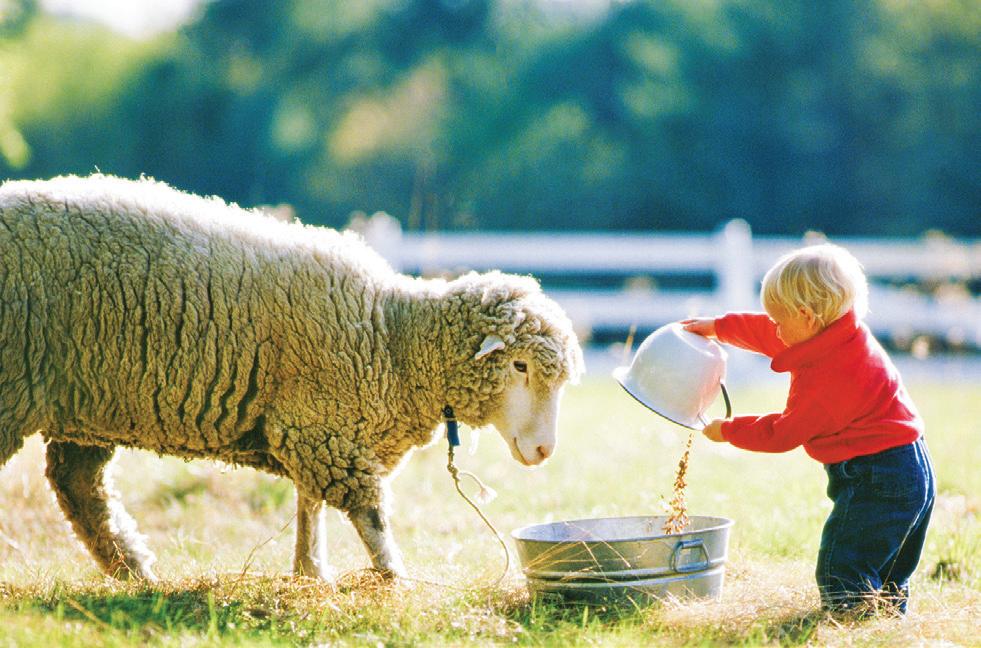

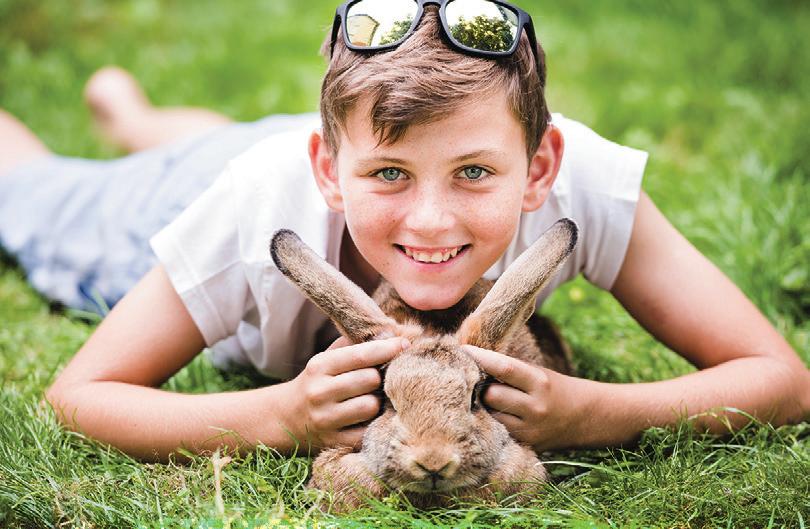

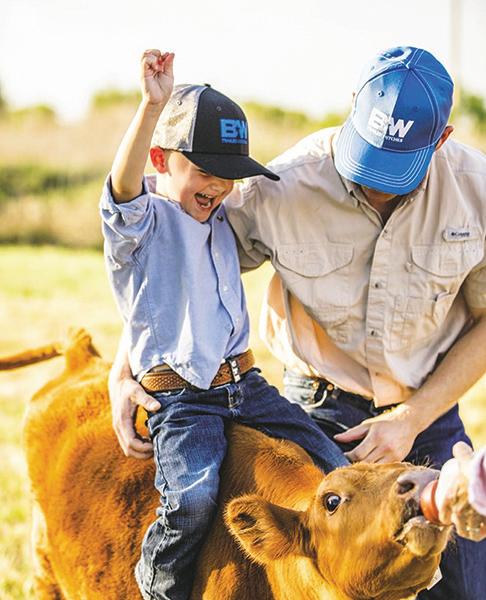
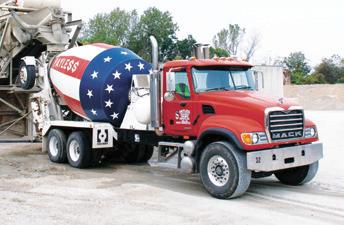

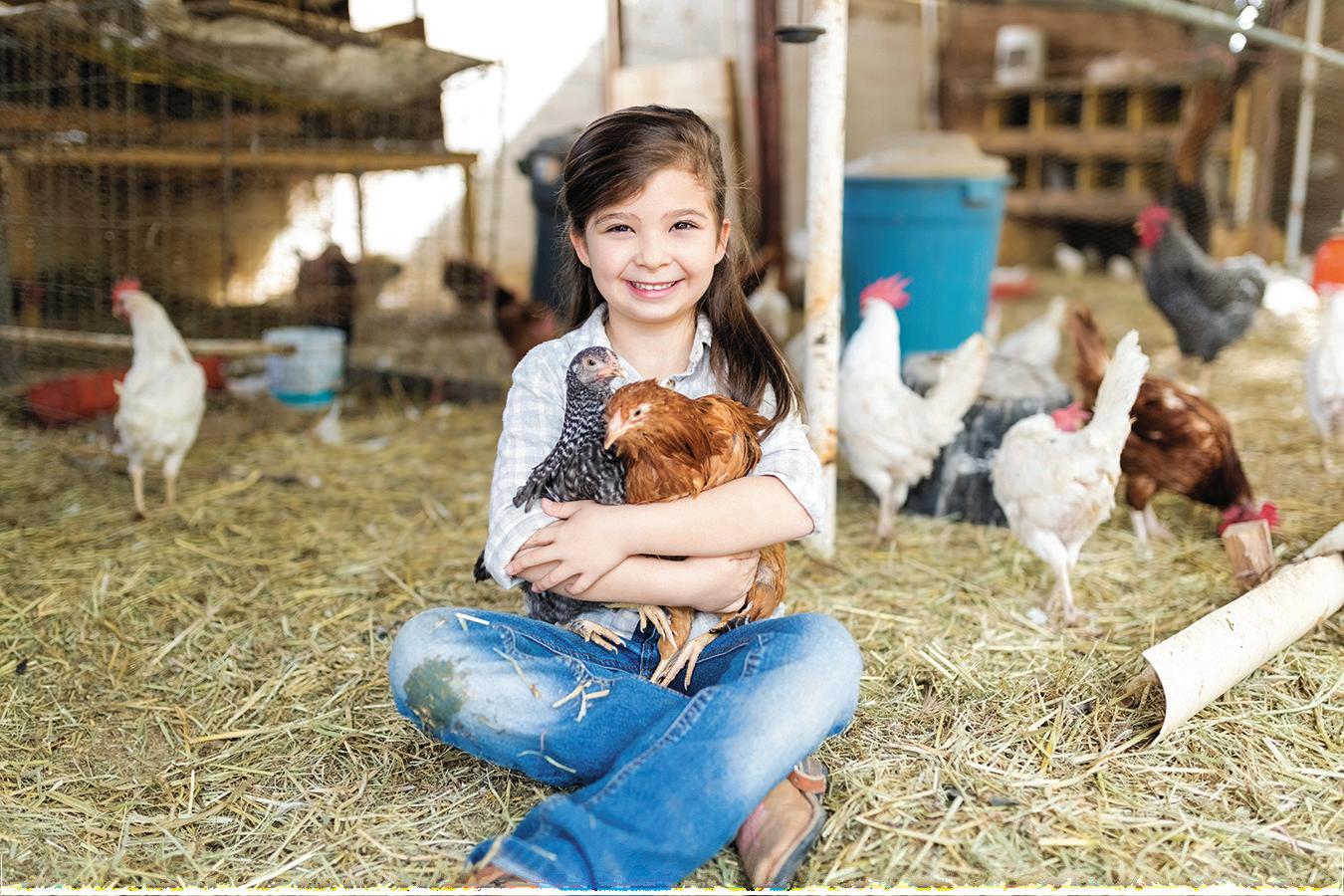






BEEF
Grand Champion Market Steer – Twin Motors Ford
Reserve Grand Market Steer
– Emprise Bank
Supreme Heifer – Dreher Farms in Memory of Stanley Dreher
Reserve Supreme Heifer –Donna Beebe
Champion Junior Beef Showman – Beverly Lewis
Champion Intermediate Beef Showman – Greg & Jackie McIntyre
Champion Senior Beef Showman – Stone Shorthorns
BUCKET CALF
Grand Champion
Intermediate Bucket Calf – Jack Curry Memorial
Reserve Intermediate Bucket Calf – Jerry Dreher & Family
Grand Champion Junior Bucket Calf – Roy and Betty Monfort Memorial
Reserve Junior Bucket Calf –
Donna Beebe
DAIRY GOAT
Grand Champion Dairy Goat
– Trent Rhodes Memorial by Rhodes Family
Reserve Grand Dairy Goat –Trent Rhodes Memorial by Resco Family
DOG
Champion Junior, Intermediate & Senior Dog Showman – Iola Animal Clinic
Champion Pre-Novice, Novice, Rally I & Rally II – Red Barn Veterinary Service
ENGINEERING & TECHNOLOGY
Champion Engineering & Technology – Deep Creek
Engineering
Reserve Champion Engineering & Technology –
Deep Creek Engineering
Engineering & Technology
Skills Award – Deep Creek
Engineering
Champion Woodworking –Tom Brigham Memorial
Reserve Champion
Woodworking – Marmaton Lodge #245
Woodworking Skills Award –Rinehart Construction
ENTOMOLOGY
Champion Entomology – AllIn-One Pest Home and Lawn LLC
Reserve Champion
Entomology – MAYA America
Corn Heads
FIBER ARTS
Champion Fiber Arts – Allen County Farm Bureau
FOODS & NUTRITION
Champion Nutrition
Education Exhibit – Lively Ones 4-H Alumni
Reserve Champion Nutrition
Education Exhibit – Wild Bloom
Coffee
Food Bowl – Setter Family in Memory of Mary & Andrew Setter
Foods Table Club Award –Marmaton Lodge #245
Overall Champion Foods
Exhibit – Iola Masonic Lodge
Reserve Champion Foods
Exhibit – Hammerson Ready Mix
Overall Champion Yeast
Bread – Prairie Rose 4-H Club in Memory of Mandy Cowan
Champion Junior, Intermediate & Senior Yeast
Bread – Carol’s Corner Cuts
Champion Junior Foods –
Carol’s Corner Cuts
Champion Intermediate Foods – Prairie Rose 4-H in Memory of Brandi Lynes
Champion Senior Foods –Kiwanis Club
Champion Food Preservation
– Jarred, Gilmore & Phillips, CPA
Champion Food Gift Basket –Larry & Carol Crawford
Reserve Champion Food Gift Basket – Bryce & Clara Misenhelter
Foods Project Skills Award, Ages 7-12 – David & Judy Kramer
Foods Project Skills Award, Ages 13-18 – Mike & Kelli Kramer
Southwind District-Wide
Kitchen-Aid Mixer Award – Larry & Carol Crawford
HORSE
Champion Mare – Craig & Georgia Abbott
Champion Gelding –PrairieLand Partners
Champion Junior & Intermediate Horse Showman –Jones-Hardy Auxiliary #385
Champion Senior Horse Showman – Loomis Wholesale Tack Supply
Champion Senior Pole
Bending – Piqua Farmers Coop
Champion Intermediate Pole
Bending – Community National Bank & Trust
Champion Junior Pole
Bending – Jack & Beverly Franklin
Overall Champion 4-H
Reining – Bryson & Michele
Wagner
Champion Senior Barrel
Racing – MAYA America Corn Heads
Champion Intermediate Barrel Racing – MAYA America
Corn Heads
Champion Junior Barrel
Racing – Jack & Beverly Franklin
Champion Senior Horsemanship – Don Nichols
Memorial
Champion Intermediate Horsemanship – MAYA America
Corn Heads
Champion
Junior
Horsemanship – Sonic Equipment
Champion Senior & Intermediate Western Pleasure
– Piqua Farmers Coop
Champion Junior Western Pleasure – Hammerson Ready Mix
Champion Senior & Intermediate Trail – Sonic DriveIn Iola
INTERIOR DESIGN & ARCHITECTURE
Champion Interior Design & Architecture – Decorator Supply
Reserve Champion Interior
Design & Architecture – Allen County Farm Bureau
LIVESTOCK JUDGING CONTEST
Champion Junior Livestock
Judge – Iola Animal Clinic
Champion Senior Livestock
Judge – Van & Ellen Thompson
Champion & Reserve 4-H Club Livestock Judging Team –Modern Copy Systems
MEAT GOAT
Grand Champion Meat Goat
– Pat Collins Farm
Reserve Grand Meat Goat
– ACE Refrigeration Heating & Cooling
Champion Meat Goat Doe
– ACE Refrigeration Heating & Cooling
Reserve Champion Meat
Goat Doe – Doug & Roberta Nickell
Champion Junior & Senior Doe – Jerry & Judy Middendorf
Champion Junior, Intermediate, & Senior Meat
Goat Showman – Virginia Masonic Lodge
MISCELLANEOUS
Junior & Senior Champion
Favorite Food Show – Jeanice and the late Maynard Cress
Champion & Reserve Club
Billboard – Heartland Tractor, PrairieLand Partners, Allen County Farm Bureau, and JK Botts Farms
Champion & Reserve Club
Booth & Banner – Emprise Bank
Champion Decorated Haybale – Virginia Masonic Lodge
Reserve Champion
Decorated Haybale – Bryce & Clara Misenhelter
Champion Overall Poster, Notebook, or Display – Jim & Brenda Armstrong
Reserve Champion Poster, Notebook, or Display –Marmaton Lodge #245
Tom Maxwell Award – Allen County Fair Board
Jeanice Cress Award – Allen County Fair Board
JR Lewis Memorial Award –Family in Memory of JR Lewis
Showmanship and Livestock
Belt Buckles – B&W Trailer Hitches
4-H Member Fair T-Shirts –Landmark National Bank
Barnyard Olympics – Shirt Shop
PHOTOGRAPHY
Champion Photography –Moran Ruritan
Reserve Champion Photography – Hopkins Photography
Best Patriotic Photo – April Kroenke Photography
Best Vacation/Travel Photo –April Kroenke Photography
PLANT SCIENCE
Champion Plant Science –TLC Garden Center
Reserve Champion Plant Science – Allen County Farmers Market
POULTRY
Grand Champion Poultry –Botts Farms
Reserve Champion Poultry –Duwayne & Debbie Bearden
Champion Jr. Poultry
Showman – Jon & Jill Wilks
Champion Int. Poultry
Showman – Heartland Tractor
Champion Sr. Poultry
Showman – Jon & Jill Wilks in Memory of Phil Kottler
RABBIT
Champion & Reserve
Champion Rabbit – Great
Southern Bank
Champion Senior Rabbit
Showman – Community National Bank & Trust
Champion Intermediate Rabbit Showman – Jon & Jill Wilks
Champion Junior Rabbit
Showman – Piqua Farmers Coop
RATE OF GAIN
Rate of Gain for Beef, Bucket Calf, Sheep, Swine & Meat Goat – MAYA America Corn Heads
ROUND ROBIN
Round Robin Champion –MAYA America Corn Heads
Reserve Round Robin
Champion – Allen County Fair Board and MAYA America Corn Heads
SEWING & TEXTILE DESIGN
Champion Junior, Intermediate & Senior Sewing & Textile Design – MAYA America Corn Heads
Overall Champion Sewing & Textile Design – Jan Knewtson
Junior (Ages 7-12) Champion
Sewing & Textile Design Skills –Gayla Allen Memorial, Coy Allen Family
Senior (Ages 13-18)
Champion Sewing & Textile Design Skills – Gayla Allen Memorial, Coy Allen Family
SHEEP
Grand Champion Market
Lamb – ACE Refrigeration Heating & Cooling LLC
Reserve Grand Market Lamb – Heartland Tractor
Supreme Breeding Ewe – ACE Refrigeration Heating & Cooling LLC
Reserve Supreme Breeding Ewe – Piqua Farmers Coop
Champion Junior, Intermediate & Senior Sheep
Showman – Chris & Sherry Elmenhorst
SHOOTING SPORTS
Champion Shooting Sports –Stroud’s Guns
Champion Junior Boys
Shopping in Style – Steve Mangus Memorial – Square B 4-H Club
Champion Intermediate Boys
Shopping in Style – 110 Lounge & Event Center
Champion Senior Boys
Shopping in Style – Marmaton Lodge #245
Champion Junior Girls
Shopping in Style – Audacious Boutique
Champion Intermediate Girls
Shopping in Style – 110 Lounge & Event Center
Champion Senior Girls
Shopping in Style – Audacious Boutique SHOWMANSHIP
Overall Champion Showman Beef, Sheep, Swine, Horse & Meat Goat – Emprise Bank, Piqua State Bank, Community National Bank & Trust, and MAYA America Corn Heads
Grand & Reserve Market Hog – Elsmore Ruritan Club
Supreme Breeding Gilt –Loren Korte & Family
Reserve Supreme Breeding Gilt – Jeff Nemecek & Family
Champion Junior & Intermediate Hog Showman –Mike & Tiffany Hurt
Champion Senior Hog Showman – Jeff Nemecek & Family
Champion Junior, Intermediate & Senior Visual Arts – Mike & Kathy McEwan
All sponsors are invited to join us at the Friends of 4-H Picnic at 6 p.m. on Tuesday, July 23 at Iola High School.
4-H & FFA GENERAL RULES
Entries close — July 1 (Late Fee: $25 per Exhibitor, paid to 4-H Council)
1. All exhibitors must be Allen County 4-H or FFA members and are eligible to enter and compete for prizes.
2. Exhibitors can exhibit only in those phases of the project in which they are enrolled. No exchange of projects is permitted. All exhibits must be the result of the current 4-H year.
3. Conference judging will take place by club on Wednesday:
a. Prairie Rose – 2-3 p.m.
b. Logan Pals – 3-4 p.m.
c. City Slickers – 4-5 p.m.
d. Prairie Dell/Square B –5-6 p.m.
4. All 4-H entries will be judged as a purple, blue, red or white ribbon and premiums paid as listed in the premium book.
5. Exhibits removed from the Allen County Fair prior to 9 p.m. Saturday without the consent of the Department Superintendent shall forfeit all premiums won at the fair. All pens and stalls must be cleaned out by no later than 2 p.m. Sunday or premiums will be withheld. All other exhibits should be removed 9-10 p.m. Saturday.
6. Only static exhibitors with purple ribbons are eligible to exhibit at the Kansas State Fair and all exhibitors MUST be 9 years of age by Jan. 1 of the current year. Some project areas are subject to limitations.
7. 4-H clubs will be responsible for cleaning the area around the barns, community building, show arena, and parking lot between 3-5 p.m.
a. Thursday — Prairie Rose
b. Friday — City Slickers
c. Saturday — Logan Pals
d. Sunday — Prairie Dell & Square B
8. Jeanice A. Cress Award: To be eligible for consideration, a 4-H member must participate in one of the two following competitions: favorite food show or fashion revue. Points (4, purple; 3, blue; 2, red; 1, white) will be
earned for exhibits in sewing and textile design, interior design and architecture, food preparation, food preservation, arts and crafts, fiber arts, and fashion revue.
9. Tom Maxwell Award: The fair board has established this 4-H award to be given annually. Points (4, purple; 3, blue; 2, red; 1, white) will be earned for exhibits in plant science and entomology.
10. JR Lewis Memorial Award: The family of JR Lewis established this award to be given annually at the fair. The requirements are: 1) must be a 4-H member in good standing or an active FFA member, 2) must exhibit a market or breeding livestock project (Beef, Swine, Sheep, and Goat) at the Allen County Fair, and 3) must not have received the award before. The recipient will be selected by an anonymous committee and announced prior to the Livestock Sale.
11. Grievance Policy:
a. All grievances must be in writing. Such grievances must plainly state the cause of complaint or appeal and must be submitted to either of the County Extension Agents within 24 hours following the occasion for the grievance, accompanied by a $25 cash deposit. The deposit will be forfeited if the grievance is overruled.
b. Protests will not be accepted after the exhibit or event/activity is completed/ released.
c. Protests related to judges’ integrity, decision, placings or other evaluations will not be accepted.
d. Upon receipt of a qualified grievance, the District Extension Agent(s) will promptly notify the person against whom the grievance was made, the Superintendent of the department for the class or event, appropriate Fair Board representatives, and other parties who may have relevant
information. The notice will give a time and place for a hearing to address the grievance. The hearing committee, authorized to act upon any protest, may consist of, but not be limited to, the following: District Extension Agent(s), Fair Board representative, Superintendent of Department in question, a 4-H Club leader, a 4-H PDC member, a 4-H Council representative, and an Extension Executive Board member.
e. When a protest is either allowed or denied, the course of action shall be entered in writing, and a copy delivered to the protestant and the person against whom the grievance was made. Premiums and awards will be properly distributed when a final decision on the grievance is made. The hearing committee reserves the right to institute further restrictions upon the person/persons upon whom the protest was made.
4-H/FFA Livestock Sale Sunday at 6:30 p.m.
1. Each Allen County 4-H and FFA member enrolled in the market livestock project is eligible to sell only one (1) animal through the auction.
2. All market livestock must have been tagged at the spring weigh-in for validation of ownership.
3. Animals entered in breeding classes cannot be sold base bid.
4. The 4-H or FFA owner of the animal must be present to lead the animal into the sale ring.
5. All livestock must have been exhibited at the Allen County Fair to be eligible for the sale.
6. Members will obtain their money from the buyer at their place of business by presenting them with a sale ticket and the
buyer’s rosette and a token of appreciation. Custom kill animals — both premium and base bid checks will come from the buyer.
7. Animal weights for sale and exhibiting must be a minimum of:
a. Steers — 1,000 pounds, Hogs — 230 pounds, Lambs — 95 pounds, Goats — 55 pounds
8. Second year bucket calf weight for sale must be a minimum of 1,000 pounds.
9. Four or more animals per breed must be shown before a champion ribbon is awarded.
10. Animals that don’t meet weight requirements for their species are not eligible for the rate of gain competition.
11. For all species, the superintendent must be notified of class (breeding or market) before the animal leaves the scales.
12. Only one (1) reweighing on the scales provided will be permitted. Reweighing is allowed only on animals falling outside of the weight ranges. This is to be done only upon request and will be done immediately following the rebalancing of the scale. No animal will be reweighed after returning to its pen or stall. Hogs carrying mud on them will not be weighed until the mud is removed. Lambs carrying excess wool at weigh-in time can have a 2-pound dockage assessed on them. Superintendent can determine if needed.
13. Exhibitors must notify the appropriate livestock superintendent(s) on what they will do (premium sale, ship base bid, or take home) with each market animal exhibited at the fair. Intent to sell cards are due to the announcer’s stand by Saturday at 10 p.m. The $10 fee for each animal sold will be deducted from the exhibitor’s sale check. Failure to meet the above deadline will result in:
a. If notified after 10 p.m. Saturday but before 8:30 a.m.
on Sunday, exhibitors may participate in the premium sale ONLY after paying a $25 late fee. All late entries will be placed at the end of the sale program. The animal may be shipped base bid.
b. If not notified by 8:30 a.m. on Sunday, the animal will go home. It will NOT be shipped base bid and will NOT be eligible for the premium sale.
14. All livestock will be subject to drug withdrawal.
15. Following the premium sale all animals must return to their pen to be checked by the superintendent.
16. An individual animal can be shown in both 4-H and open class. (Rule as adopted by the fair board at the April 2004 meeting.)
17. Health requirements:
a. All animals are subject to examination by the exhibition staff or their representatives and shall be free of clinical signs of infectious or contagious disease.
b. BEEF and DAIRY: The KDA requires no test on cattle of Kansas origin. Cattle determined by exhibition staff to have lesions of ringworm, warts or infected with mange will not be permitted to exhibit.
c. HORSES: All horses will be subject to inspection at the time of unloading. A valid VS Form 10-11 showing evidence of a negative Equine Infectious Anemia (Coggins) test conducted by a state-approved laboratory within 12 months prior to exhibition is recommended, but not required by KDA.
d. SHEEP and GOATS: All animals with signs of sore mouth, active fungus (ringworm and club lamb fungus) infection, warts or infested with mange will not be permitted to exhibit. All must be identified with an official USDA premise ID tag.
e. POULTRY: The KDA has changed the requirements on having poultry tested for County Fairs. For birds exhibited at the
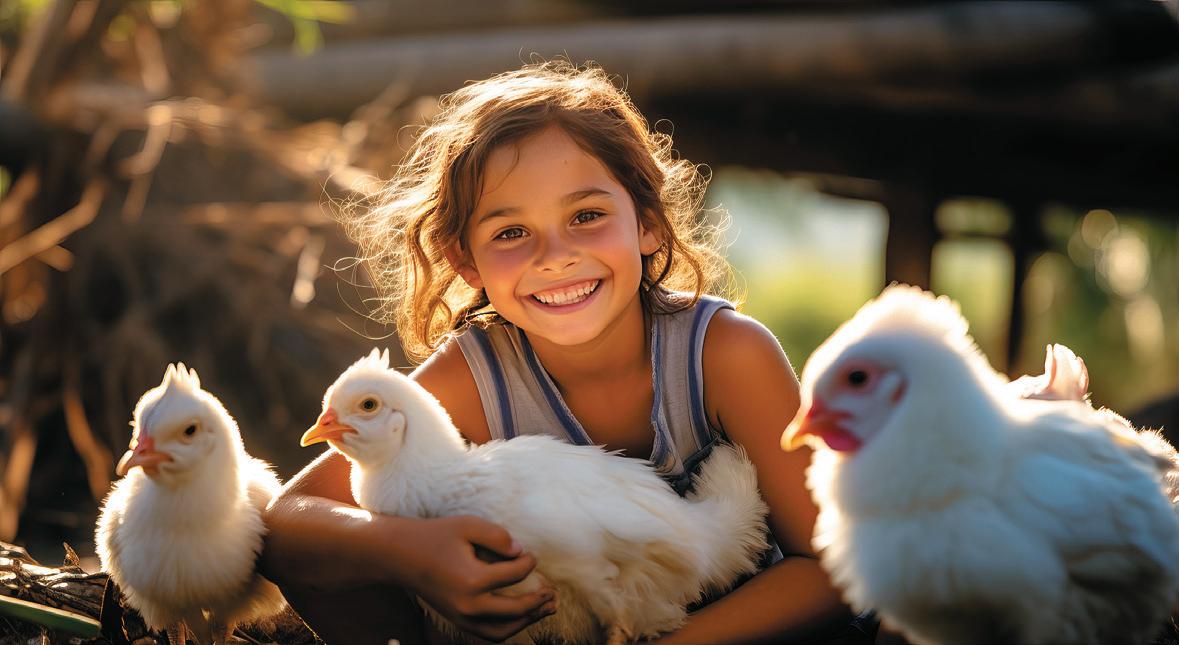
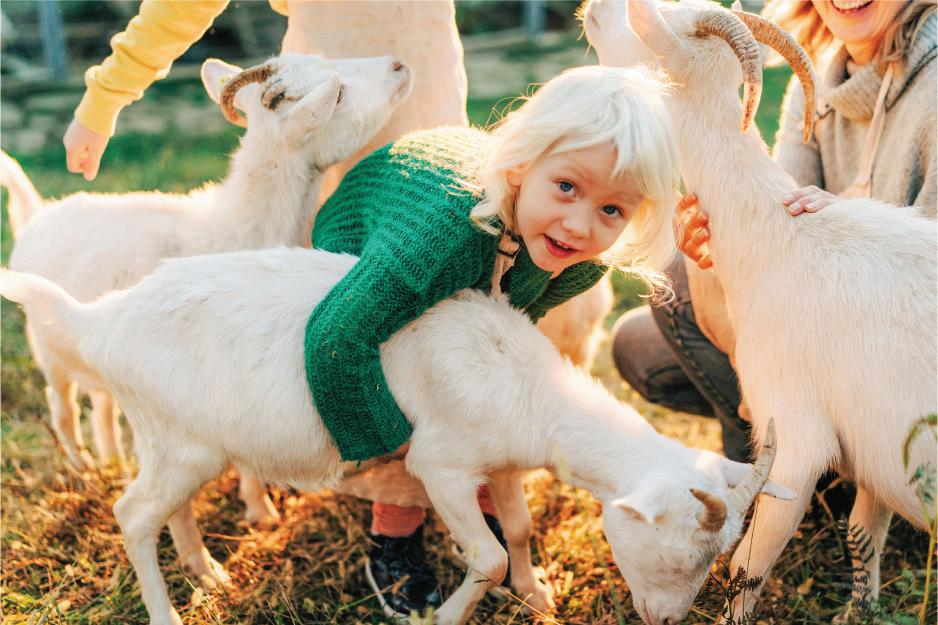

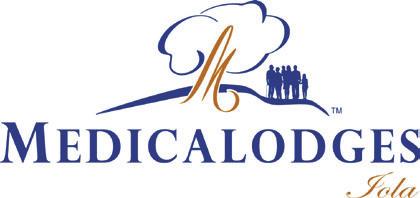
county fair in the Southwind Extension District that originate from Kansas do not need to be tested before the fair until 2027. Birds will then be tested every 5 years. If your bird comes from out of state, you will be required to test within 90 days of the fair.
f. No inhumane or unethical treatment of animals will be tolerated. Violators may be sent home.
g. The use of any tranquilizer, sedative, analgesic, or chemical restraint in association with exhibit or sale is prohibited.
18. 4-H exhibitors MUST exhibit their own livestock. In case of two entries or sickness, another Allen County 4-H member may show, provided it meets with the approval of the department superintendent.
19. 4-H/FFA members who have livestock stalled at the Allen County Fair will be charged a $10 per head stall fee if they fail to meet the following requirements:
a. Assistance at pre-fair cleanup
b. Assistance at post-fair cleanup
c. Assistance with set-up for livestock premium sale
20. If an animal was shown at another county fair in the 4-H/ FFA division in the current year, that animal is not eligible to sell or show at the Allen County Fair.
21. If an exhibitor sells an animal at a county fair 4-H/FFA division premium auction in the current year, that exhibitor is not eligible to sell in the Allen County 4-H/FFA Premium Auction or any Kansas State Show.
22. Showmanship will be offered for each show and shown by age divisions. Those age divisions are Junior (Ages 7-9), Intermediate (Ages 10-13), and Senior (Ages 14-18).
Large Livestock Exhibits:
Purple/Blue - $3.00; Red - $2.00; White - $1.00
Small Animals & Static Exhibits: Purple/Blue - $1.50; Red - $1.00; White - $0.50
Club Exhibits: Purple/Blue$10.00; Red - $5.00; White - $1.00 No premiums for Showmanship or Judging Contests.
Hunter Nickell
Livestock Production Agent
Jennifer Terrell 4-H Youth Development Agent
Shelly Wagner
Office Professional
Casey Diver
Extension Program Assistant
Hollie Yoho
Extension Program Assistant
Extension Office Phone Number: (620) 365-2242
Superintendent
Wes Stone
1. Market cattle to be shown by breed & weight.
2. Market cattle must weigh a minimum of 1,000 lbs. to be eligible for Grand Champion and to sell in the Premium Auction. An underweight class will be offered for all cattle weighing less than 1,000 lbs.
3. Individual animals cannot be shown in both a market and breeding class.
4. Every 4-H steer may be mouthed. Determination as to whether steer entries fall within desired age limits for show steers will be based only on the development of the teeth. Any steers that, in the opinion of the official in charge, have their permanent incisors up and in wear will be excluded from entry in the show.
5. All livestock must be typical
of the breed they represent.
BREEDING HEIFER CLASSES
• Continental • Crossbred
• Cow-Calf Pair
• English MARKET CLASSES
• Continental (50% or more:
• Maine, Chi, Charolais, etc.)
• Crossbred
• English (Purebred: Hereford, Angus, Shorthorn)
• Market Heifer
• Second Year Bucket Calf
Superintendent
Jerry Dreher1. No more than one entry per exhibitor.
2. All calves must be born between Jan. 1 and May 1 of the current year.
3. Bucket calves are not eligible to show in the market, breeding, or dairy cattle show.
4. It is recommended the calf be a steer or heifer.
5. All entries must have been weighed and tagged at the spring weigh-in.
6. Only exhibitors ages 12 and younger by Jan. 1 of the current year are eligible to compete in this division.
7. Calves will not be judged on conformation, but emphasis is on knowledge of project, showmanship and grooming.
CLASSES
• Bucket Calf - Ages 7-9
• Bucket Calf - Ages 10-12
1. All equipment, sheets, tacks, hammers, nails, etc., are to be furnished by the clubs.
2. Local exhibits only. Not eligible for State Fair.
3. Basis of Awards:
a. Educational Value
i. Presents suggestions,
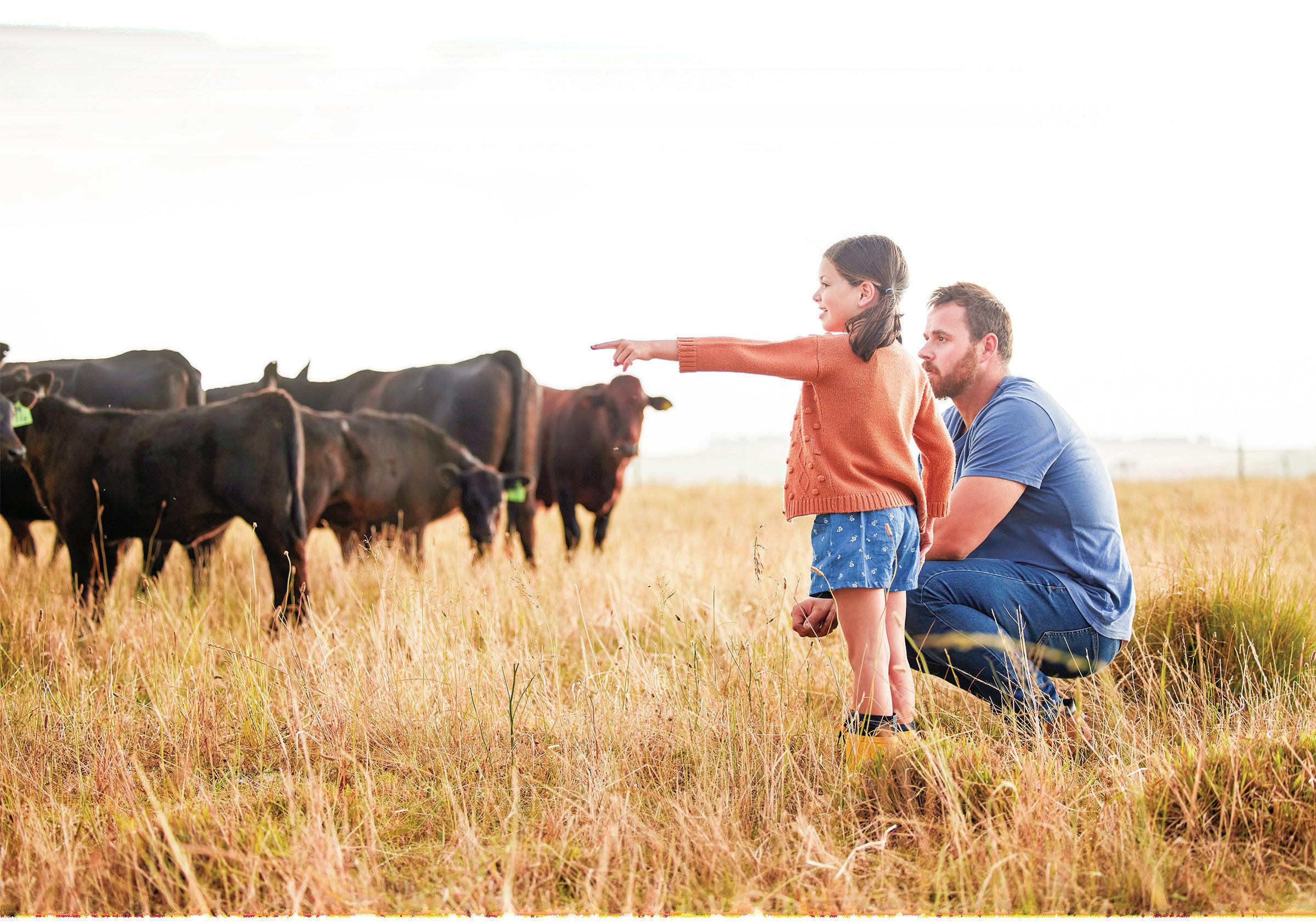


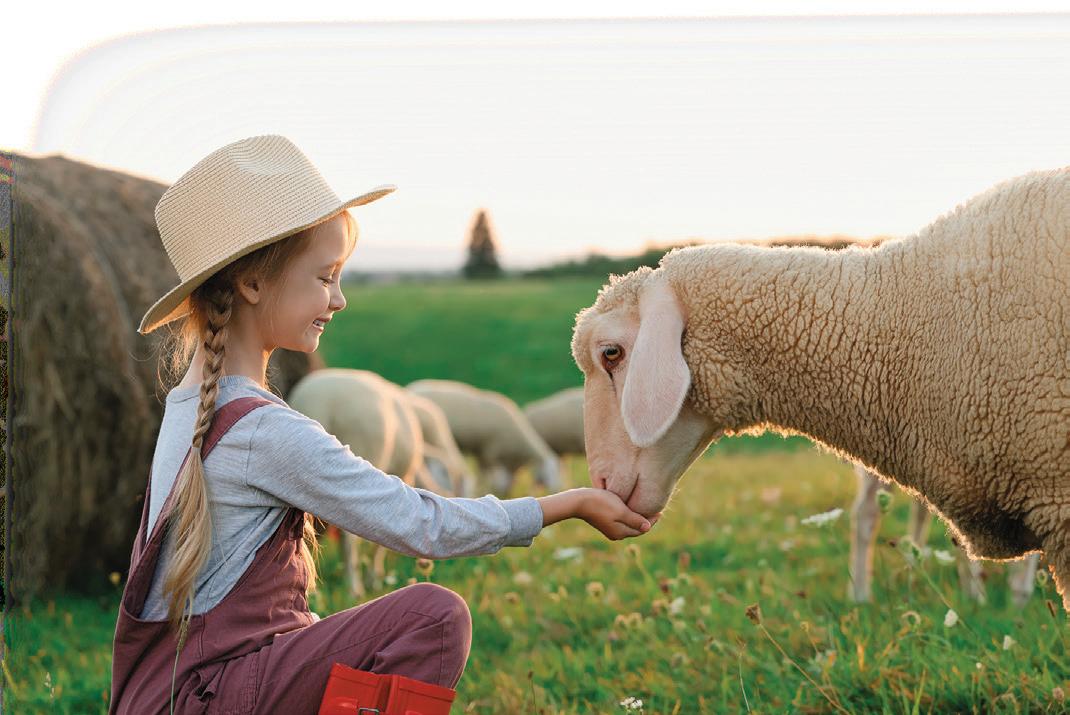


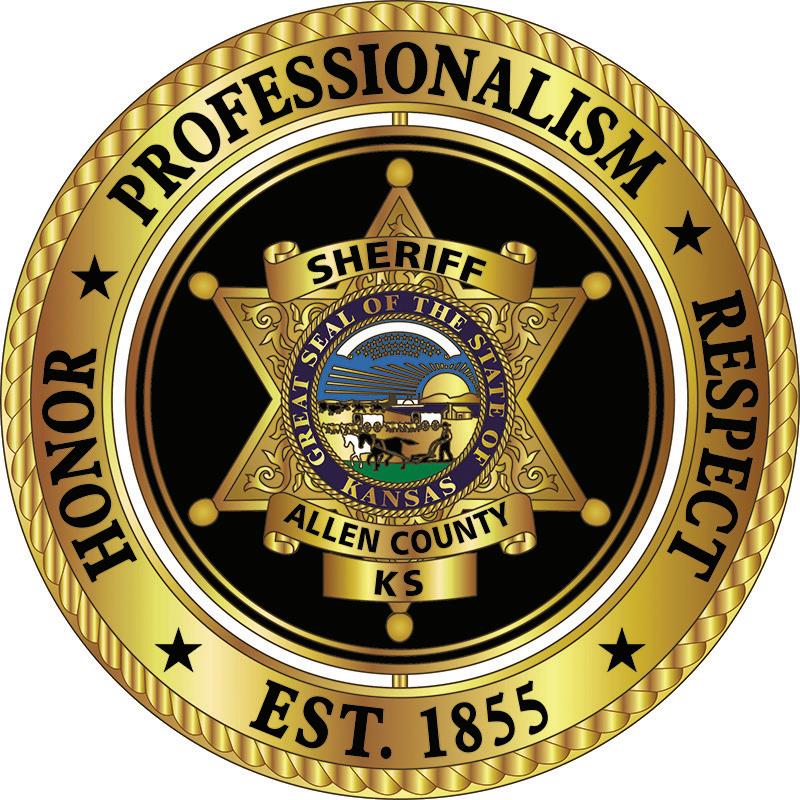


striking facts of clinching arguments, simple in form, quickly grasped and ease of accomplishments.
ii. Shows the extent to which 4-H work involved meets a fundamental need.
iii. Promotes decision and action — gives yields, savings, increased returns or other benefits that adoption of practices represents.
b. Interest and Originality
i. Presents original, unusual or striking method of exhibition. Uses life, motion, color or light to emphasize the main idea presented.
ii. Holds interest of people until they have read or observed essentials of the materials presented.
iii. Uses familiar illustrative material.
iv. Uses method demonstration or simple contrast.
v. Defines clearly one central idea.
c. Appearance
i. General appearance, artistic, neat and attractive.
ii. Title sign showing subject or exhibit.
d. Quality of Display Material
i. Maps, labels and charts designed to feature effectively the work or practices presented. Consider the size of letters and cards in relation to the importance of the idea.
ii. Quality of products grown, or articles made.
iii. No hay/straw bales allowed inside due to fire code.
4. Banners are a twodimensional display. The club’s name must be listed somewhere on the banner. Banner must be a minimum of 12 and maximum of 16 square feet, with a minimum of 3 feet on one side.
5. Billboard and haybale decorations should be weatherand wind-proof. They should also be checked and maintained daily. No commercial or political party
signs of any kind are allowed. Please keep the area around your billboard clean and free of trash. Decorations may not be removed from haybales/billboards before Sunday. Clubs must supply their own haybale.
6. Each 4-H club is responsible for the decoration of their foods display table. The tables will be judged on arrangement and decoration only.
• 4-H Club Banner
• 4-H Club Billboard and/or Haybale
• 4-H Club Booth
• 4-H Club Food Table
Superintendent
Kristian RescoDAIRY CATTLE CLASSES
Specify breed on entry form
• Junior Heifers (born after March 1 of current year)
• Fall Heifer Calf
• Junior Yearling Heifer
• Senior Yearling Heifer
• Two-year-old females
• Cow, 3-4 years old
• Cow, 4 years & older
DAIRY CATTLE SHOWMANSHIP
• 7-9 ages
• 10-13 ages
• 14-18 ages
DAIRY GOAT CLASSES
Specify breed on entry form
• Junior Doe 0-4 months
• Junior Doe 4-8 months
• Junior Doe 8-12 months
• Junior Doe 12-24 months (never freshened)
• Senior Doe under 2 years
• Senior Doe 2-3 years
• Senior Doe 3-4 years
• Senior Doe 4-5 years
• Senior Doe 5 years & older
Dog
show opportunities are
available. Contact the office for registration information. Registration for show(s) will not be integrated with the Fair Entry System.
1. Each exhibitor is required to follow the Kansas State Fair Rules for all STEM Classes. Kansas State Fair Book: www.kansas4-h. org/events-activities/fairs/ kansas-state-fair/index.html.
2. One entry per class per participant.
• Rocket made from kit. Include plans.
• Scale rocket made from kit. Include plans.
• Scale rocket designed by exhibitor.
• Mid or high-power rocket made from kit or original design.
• Educational Poster, notebook, poster, display board (see STEM Educational Exhibit rules in KSF Book)
AG MECHANICS WELDING CLASSES
• Welding (Display Board1st Year only, Ag or General Repair, Ag, Artistic, or General Fabrication)
• Brazing (Repair or Fabrication)
• Smithing (Display Board1st Year Only or Smithing Design)
• Telescope made from kit
• Telescope made from original design
• Educational Display, Notebook, Poster BUILDING
• Level 1 (1-3 years of experience) Diorama illustrating at least 2 architectural features beyond
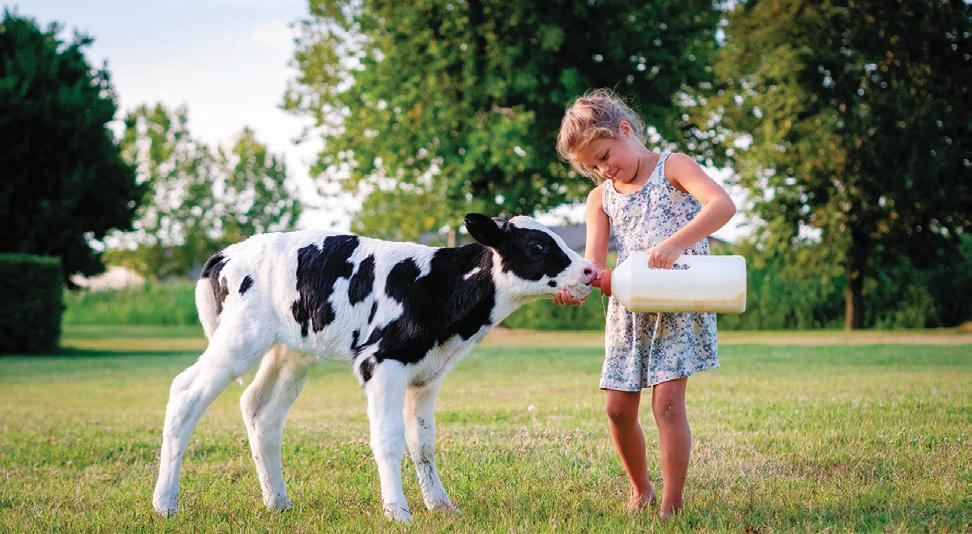


floors, ceilings, and walls
• Level 2 (4-6 years of experience) Diorama illustrating at least 4 architectural features beyond floors, ceilings, and walls, and includes 1 or more motion elements
• Level 3 (7-9 years of experience) Diorama illustrating at least 6 architectural features beyond floors, ceilings, and walls, and includes 2 or more motion elements
• Level 4 (10 or more years of experience) Diorama illustrating at least 8 architectural features beyond floors, ceilings, and walls, and includes 3 or more motion elements
• Computer program, application, app, script, or coded system that is new and unique (not merely a file run in a program, such as a ‘Word document’ or a picture drawn in ‘Microsoft Paint.’)
• Computer presentation (PowerPoint, web page/site, animated graphics, etc.)
• Single computer system (web server, database server, etc.)
• Networked system consisting of two or more computers
• Chip system - a small (8”x8”x8”) programmed physical device that accomplishes a specific task. Rocketry exhibitors must be 14 years and older.
• AC Electric Projects. Electric projects with a 110 or 120 V alternating current (AC) power source. Projects may be a restoration or original construction. The project must be operational and meet minimum safety standards. AC projects must be 110/120 V. No 240 V
exhibits are allowed.
• DC Electric Projects. Electric projects with a battery or direct current power source.
• Electronic Projects. Electronic projects with a battery or direct current power source.
• Educational Displays and Exhibits. The purpose of the education display and exhibit is to educate the viewer about a specific area of the 4-H electrical or electronics project. Educational displays and exhibits must be legible from a distance of four feet, using a maximum trifold size of 3’x4’.
• Robot made from a commercial (purchased) kit. (No Programming just assembly)
• Robot designed by exhibitor. The robot must not be a mere modification of an existing robot kit or plan.
• Programmable robot made from a commercial (purchased) kit.
• Robot designed and constructed by exhibitor or from a commercial kit, that is operated by a remote-controlled device.
• Junk Drawer Robotics
• Team Project. Robot designed and constructed by two or more 4-H members.
• Educational Poster, notebook, poster, display board (see STEM Educational Exhibit rules in KSF Book)
1. All exhibits should involve engines smaller than 20 horsepower.
2. Engine should contain no fuel in tank or carburetor.
3. Displays are limited to 4’ wide and 4’ deep - both upright and floor displays.
• DISPLAY – Exhibit a display, selecting one of the following options: 1) a display identifying different engine or lawn and garden equipment
parts or a display showing the function of the various engine or lawn and garden parts; OR 2) a display identifying and explaining the function(s) of different special tools needed for small engine work; OR 3) a display illustrating and providing the results of any one of experiments that are included in the project books. No complete engines, lawn tractors, tillers, chainsaws are permitted for display. Maximum tri-fold size is 3’x4’.
• MAINTENANCE – Exhibit a display that illustrates either 1) Routine maintenance procedures OR 2) Diagnosing and troubleshooting specific problems in an engine. No complete engines, lawn tractors, tillers, chainsaws, ext. are permitted for display, using a maximum tri-fold size of 3’x4’.
• OPERATION – Exhibit an operable small engine (no more than 20 HP) overhauled or rebuilt by the exhibitor. Include maintenance schedule for the engine and a brief description of steps taken by the exhibitor overhauling or rebuilding the engine. Maximum tri-fold size is 3’x4’. Engine should contain no fuel in the tank or carburetor.
• EDUCATIONAL DISPLAYCreate an exhibit that addresses a focused topic related to wind power as a renewable energy source. The purpose of the exhibit is to inform and create awareness.
• EXPERIMENT DISPLAY - An experiment addressing a problem or questions - related to wind power as a renewable energy source. Include hypothesis, background research, variables, control, data, finding, conclusions and recommendations for future studies.
• Introductory, 7-8 year olds
• Unmanned Aerial System designed and constructed by exhibitor that is operated
by a remote controlled device. The UAS must not be a mere modification of an existing kit or plan. You may not exhibit a UAS that is purchased off the shelf in this class.
• Practical application of an Unmanned Aerial System constructed from a commercial (purchased) kit. This includes the UAS, plus one or more of the following: video, notebook, poster, display board, etc. This class is separate from educational exhibits. A tangible use would be mapping Russian olive trees, eroded soils, and bindweed in fields, etc. There are also many other non-agricultural UAS uses that would be appropriate for this class.
• Educational Poster, notebook, poster, display board (see STEM Educational Exhibit rules in KSF Book)
• Article for farm or shop use
• Furniture for household or lawn use
• Other woodwork. Articles not in above classes including any article made from a kit. Examples: birdhouses, bird feeders, household equipment such as knife racks, breadboards, doorstops, etc.
Superintendent Larry Crawford
1. An exhibitor may choose to exhibit in the Collection or Educational class for each phase, or both.
2. All entries should be submitted in an 18” x 24” x 3.5” wooden display box with a clear plastic top. Boxes can be handmade or purchased as long as they are of the correct size and do not have a glass top.
3. Identification should follow the taxonomy included in www. bug-guide.net.
4. Each exhibitor is required to identify each box by placing an identification label bearing the exhibitor’s name, county or district and the class. One label goes in the upper left corner of the box (inside) and the other on the lower right corner of the box (outside). Arrange specimens in the box so it can be displayed lengthwise.
5. The number of orders, specimens (and families where required) must be included on the exhibitor’s box identification label. Only adult specimens can be used in collection boxes.
6. Arrangement of specimens: The preferred method is to arrange the insects in groups or rows parallel to the short sides of the box. Arrangements that run lengthwise of the box are frequently downgraded in judging. Specimens are to be arranged by Order in the box, then family where required.
7. For each collection class, two labels will be centered on the pin beneath each specimen. First (closest to the specimen) is the common name label and the second label should include date/ locality. Full county/district name, state abbreviation and collector name on the second label are required. The specimens should be collected by the exhibitor and should focus on Kansas and neighboring states. Other specimens from the continental United State may be included as long as properly labeled.
8. Emphasis in judging will be placed on the overall variety of insects represented in the collection, accuracy of identification, skill and technique acquired in mounting of specimens, and overall arrangement and appearance of the collection.
9. Specimens of soft bodied
insects such as aphids, lice, termites, etc. should be exhibited in alcohol filled vials; however, the use of alcohol filled vials should be limited to only those specimens that lose their shape when pinned, since the vials pose a significant hazard to the rest of the collection if they become loose in transit.
10. Only specimens of the class insecta should be included. This means specimens from arachnids, such as spiders, millipedes, centipedes, ticks, mites, etc. will not be judged or included in the overall specimen count.
11. Points will be deducted from collections and notebooks if:
a. Non-insect and out of state specimens are not in a designated “display only” area.
b. Any specimens are immature.
12. Link to Kansas State Fair Book for required rules: www. kansas4-h.org/events-activities/ fairs/kansas-state-fair/index.html
13. Any major violation of rules will result in the exhibit being dropped one ribbon placing. Examples would include, but are not limited to: incorrect display box size, missing paperwork, feet on display boxes, no special project in notebooks, etc.
• Introductory Collection –Display in one or two shoe boxes, pencil boxes, plastic storage boxes or one standard display box a minimum of 15 and a maximum of 30 species representing at least 6 orders. The boxes should be covered with a piece of cellophane wrap, clear plastic lid, or Plexiglas taped across the top of the box or covering the box. Follow the general guidelines listed for Collections. Exhibitors may exhibit in this class for a maximum of 2 years once they become a 4-H member. There is no Kansas State Fair class for this level.
• Beginning I Entomology
Collection - Display in one standard box a minimum of 50 and maximum of 125 species representing at least 7 orders. Follow the general guidelines listed for Collections. Exhibitors can exhibit in this class a maximum of 3 years, or until they receive a purple ribbon at the Kansas State Fair, whichever comes first.
• Beginning II Entomology Collection - Display in one standard box a minimum of 75 and a maximum of 150 species representing at least 9 orders. Follow the general guidelines listed for Collections. Exhibitors can exhibit in this class a maximum of 3 years, or until they receive a purple ribbon at the Kansas State Fair, whichever comes first.
• Intermediate Entomology Collection - Display a minimum of 100 and a maximum of 300 species representing at least 10 orders. Two standard boxes can be used. Follow the general guidelines listed for Collections. In addition, family identification is required for all insects in any two of the following six orders: orders of Orthoptera, Hemiptera, Odonata, Coleoptera, Diptera, and/or Hymenoptera. On a piece of paper list what you did to improve your collection during the current year. Examples: what insects did you add or replace; what orders and/or families you added; what leadership you provided in this project; and/or what insects you have studied. Attach paper to the front of one of the display boxes. Exhibitors can exhibit in this class for a maximum of 3 years.
• Advanced Entomology Collection - Display a minimum of 150 and a maximum of 450 species representing at least 12 orders. Three standard boxes can be used. Follow the general guidelines listed for Collections. Family identification is required
for all insects belonging to the six basic orders as outlined under the Intermediate phase. Family identification of insects in the remaining orders is optional, but desirable as long as accuracy is maintained. All butterflies appearing in the collection should be labeled with the correct common name. Exhibitors may continue to exhibit in this class for an unrestricted number of years as long as they remain eligible.
1. Individual entries are to be placed for display in a three-ring notebook for competition.
2. Identification should follow the taxonomy included in bugguide.net.
3. Each exhibitor is required to identify the notebook by placing a title page in the front of the notebook bearing the exhibitor’s name, county or district and class. The number of orders, specimens and families (required in Intermediate and Advanced classes) must also be included on the title page.
4. Species pages should be grouped according to order and should include one page per species.
5. Date, common name, full county name, state abbreviation and collector name should be included for each species.
6. If the picture is taken on different dates/localities, include information for both. A statement describing the host plant/habitat should be included.
7. A divider page is to be placed in front of each order of insects with the order name printed on the tab for the page and also on the front of the divider page.
8. For the Intermediate and Advanced classes, insects are also to be grouped by family behind each order divider.
9. List on a sheet of paper how many years you have been in this division of the project and
what you did this year to improve the project if you have been in for more than one year. Place the paper just behind the Title Page in the front of your notebook.
• Introductory Collection –Display in one or two shoe boxes, pencil boxes, plastic storage boxes or one standard display box a minimum of 15 and a maximum of 30 species representing at least 6 orders. The boxes should be covered with a piece of cellophane wrap, clear plastic lid, or Plexiglas taped across the top of the box or covering the box. Follow the general guidelines listed for Collections. Exhibitors may exhibit in this class for a maximum of 2 years once they become an exhibitor. There is no Kansas State Fair class for this level.
• Beginning I Entomology Notebook - Display a minimum of 10 and a maximum of 30 insect species representing at least six different orders. Follow the general guidelines listed for Notebooks. A 4-Her may exhibit in this class for a maximum of two years.
• Beginning II Entomology Notebook - Display a minimum of 30 and a maximum of 60 insect species representing at least seven different orders. Follow the general guidelines listed for Notebooks. A 4-Her may exhibit in this class for a maximum of three years.
• Intermediate Entomology NotebookDisplay a minimum of 60 and a maximum of 100 insect species representing at least nine orders. Follow the general guidelines listed for Notebooks. Pictures in any two of the following six orders should be identified to the family: Orthoptera, Hemiptera, Odonata, Coleoptera, Diptera, and/or Hymenoptera. A 4-Her may exhibit in this class for a maximum of two years.
• Advanced Entomology
Notebook - Display a minimum of 100 and a maximum of 200 species representing at least twelve orders. Follow the general guidelines listed for Notebooks. In addition, family identification is required for all insects in the following six orders: Orthoptera, Hemiptera, Odonata, Coleoptera, Diptera, and/or Hymenoptera. Family identification in the remaining orders is optional, but desirable as long as accuracy is maintained. Exhibitors may continue to exhibit in this class for an unrestricted number of years as long as they remain eligible.
1. All entries should be submitted in an 18” x 24” x 3.5” wooden display box with a clear plastic top. Boxes can be handmade or purchased as long as they are of the correct size and do not have a glass top.
2. Information on numbers and kinds of insects is not needed for educational exhibits.
3. Displays may consist of specialized groups of insects or their close relatives or relate to any aspect of their behavior, biology or ecology.
4. Displays should be presented in a clear, concise and interesting manner.
5. Displays should include only work performed during the current year.
6. Title of the exhibit should be indicated inside the box.
7. The purpose of the project is to learn more about the importance life cycles, biology, ecology, diversity, etc. of insects and related arthropods. Subject matter can be as varied as the animals themselves.
8. Creativity is encouraged! CLASSES
• Introductory Collection –Display in one or two shoe boxes, pencil boxes, plastic storage boxes or one standard display box
a minimum of 15 and a maximum of 30 species representing at least 6 orders. The boxes should be covered with a piece of cellophane wrap, clear plastic lid, or Plexiglas taped across the top of the box or covering the box. Follow the general guidelines listed for Collections. Exhibitors may exhibit in this class for a maximum of 2 years once they become an exhibitor. There is no Kansas State Fair class for this level.
• Beginning Educational Display - A 4-Her may enroll in this class if enrolled in Beginning I or II Collection/Notebook classes or if age 9-12. Follow the general rules listed for Educational displays.
• Intermediate Educational Display - A 4-Her may enroll in this class if enrolled in Intermediate Collection/Notebook classes or if age 11-14. Follow the general rules listed for Educational displays.
• Advanced Educational Display - A 4-Her may enroll in this class if enrolled in Advanced Collection/Notebook classes or if age 13 or older. Follow the general rules listed for Educational displays.
Monarch Butterflies were officially put on the Endangered Species List on July 21, 2022. Having the scientific name Danatus plexippus, this migratory butterfly is well known for its spectacular annual journey of up to 3,000 miles across the Americas. It is now threatened with extinction due to habitat loss and climate change. 4-Hers can play a critical role in helping to bring habitat back for the Monarch Butterfly. They can help educate the public on ways to establish food sanctuaries for this butterfly species and help bring them back from the threat of
extinction.
1. Exhibits should teach the public about the Monarch Butterfly and/or ways to protect and conserve it. The information could show nectar sources for adult butterflies and food sources for caterpillars, Monarch tagging activities, collection of native milkweed and then packaging it to give to others to plant, a group working together to plant a Monarch friendly garden, etc.
2. 4-Hers may create a poster, notebook, standard size tri-fold, diorama, slide show or other visual display that shows information on Monarch Butterflies.
3. If a slide show is created, it should be presented on a zip drive along with a printed copy of the presentation.
• Beginning Monarch
Butterfly Educational Display
Class – For 4-H members enrolled in Beginning I or II Entomology.
• Intermediate Monarch Butterfly Educational Display Class - For 4-H members enrolled in Intermediate Entomology.
• Advanced Monarch Butterfly Educational Display Class - For 4-H members enrolled in Advanced Entomology.
Superintendent
Carol Crawford1. Items will be judged on Tuesday from 9-11 a.m. at the Community Building.
2. No exhibit will be released for any other use. Fiber arts exhibits cannot be used for any of the Fashion Revue classes.
3. Identification Label:
a. Type or print on 3” x 2 1/2” piece of cloth: class number, county or district, and exhibitor’s name;
b. Sew or safety-pin this ID label on the corner of the article;
c. For garments, attach an ID label to the front left shoulder

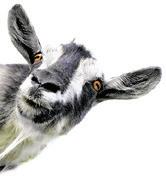




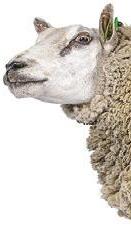


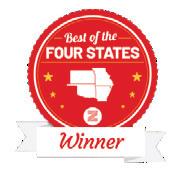
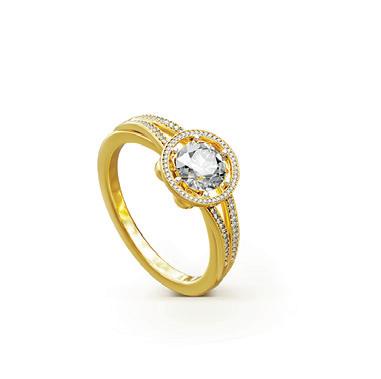
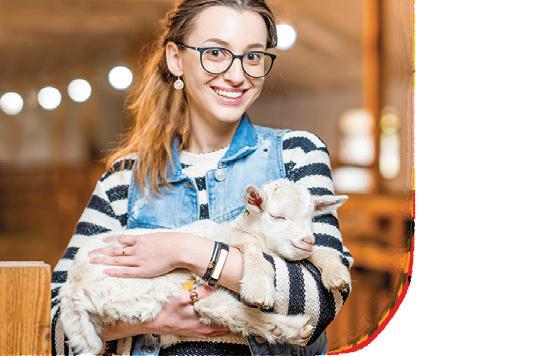
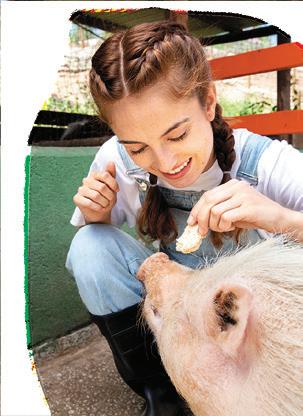


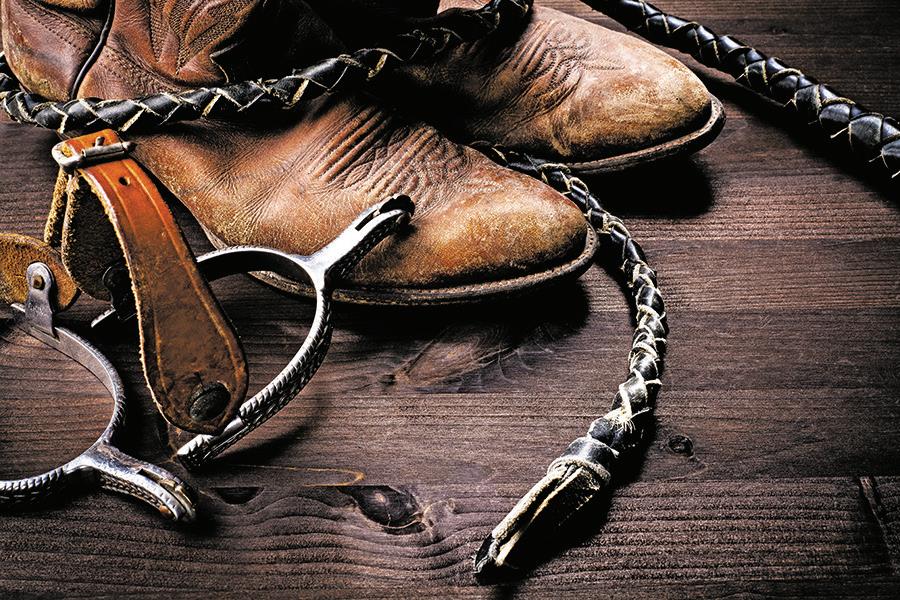

seam, or left side of waistband, as if you were wearing the garment, or lower left corner of flat articles.
4. When articles that are normally worn as a pair are exhibited, both articles must be shown together. Fasten articles together securely with yarn.
5. Special consideration will be given to articles that are of original design. Such articles should have a note attached explaining the original design.
6. The exhibitor may attach an index card, no larger than 3” x 5”, with the entry form to give the judge any information which the exhibitor thinks would be helpful for the judge to know. Explain whether you created the fabric for a knitted article by hand or by a knitting machine. Explain if the exhibit contains any recycled materials or is made of at least 90% wool.
7. All exhibits that need to be hung must have the appropriate hanger, rod, wire or other mechanism attached in order to be properly displayed.
8. There are no age-specific classes in fiber arts. The exhibitor’s age and years in the project will be considered by judges.
• Crochet, an article
• Knitting, an article made either by hand or by knitting machine
• Needle Arts, an article created by hand using any of the following techniques:
a. embroidery and crossstitch;
b. needlepoint;
c. candlewicking; d. crewel;
e. lacework; and/or
f. applique Patchwork and Quilting, an article
• Rug Making, a rug
• Spinning, a skein
• Weaving, a woven article
• Ethnic Arts, an article
• Macrame, an article
1. Each exhibitor may enter up to a total of four nonperishable food products, one food gift package, and one educational exhibit.
2. Bring a loose label with: class name, name of product, name of exhibitor and club, put on bottom of plate.
3. Recipes are required for all entries including gift baskets. If none, placing will be lowered by one ribbon.
4. The judge will interview exhibitors about their exhibits on Wednesday. The schedule is as follows:
a. Prairie Rose – 2-3 p.m.
b. Logan Pals – 3-4 p.m.
c. City Slickers – 4-5 p.m.
d. Prairie Dell/Square B – 5-6 p.m.
5. Mixes may be used in the junior division only. Bread machines may be used in all age divisions.
6. All unfrosted cakes should be exhibited in an upright position with crust showing, except for those cakes made with special designs such as Bundt cakes. They should have the top crust side down.
7. Any baked product that can be removed from the pan should be. Loaves and cakes must be whole and uncut.
8. For food safety purposes any food with custard and dairybased type fillings and frostings (ex. cream cheese), raw eggs, flavored oils, “canned” bread or bread or cakes in a jar, cut fresh fruit or any food requiring refrigeration (ex. bacon) will be disqualified and not judged.
9. Alcohol is not allowed as an ingredient in food entries. Entries with alcohol in the recipe will be
disqualified and not be judged.
10. All baked goods must be left whole and uncut. Small items, such as cookies and rolls, should be the same shape and from the same recipe. Exhibit 3 cookies, 3 muffins, 3 breadsticks, 1 loaf bread, etc.
11. Underbaked entries will be lowered one or more ribbon placings.
12. For food safety purposes, any entries with frostings and fillings must calculate the amount of sugar in the frosting/filling recipe only. Calculation must be attached to entry, or the placing will be lowered one ribbon when judged. Frostings and fillings need to contain more than 65% sugar for safety. Examples on how to calculate this percentage are included in the publication located at https://bookstore.ksre. ksu.edu/pubs/MF3544.pdf.
13. Definition for educational exhibits: Exhibits may be in the form of a poster, notebook or display. Follow copyright laws. Take care to select materials that will withstand fair conditions. No card table displays are allowed. If the exhibit is a poster, it must not be larger than 22”x28”. Displays are not to exceed a standard commercial 3’x4’ tri-fold display board.
14. A food gift package must contain at least 3 different non-perishable food items prepared by the exhibitor in a suitable container no larger than 18”x18”x18”. Additional homemade food items beyond the 3 minimum or purchased items may be included in the gift basket. Food products will not be opened or tasted. No alcoholic beverages will be allowed. Packaging should allow all or part of the product to be seen. Attach a card answering these questions: a) What is the intended use; b) What food safety precautions were taken during and after preparation. Failure to
do so will result in placing being lowered by one ribbon. Home canned foods must follow Food Preservation rules. Canning jars should not be used for baking per manufacturer’s instructions. They could break during baking.
15. A decorated food entry must be a food item. If not, it will be disqualified. Judging is based on decoration only. This item is not eligible to exhibit at the State Fair.
16. All purple ribbon products will be kept back for the selection of special awards. The entire product will be kept on display for exhibits receiving champion, reserve and other special awards. Purple ribbon products not receiving champion, reserve, or other special awards can be picked up at 7 PM on Wednesday. Champion and reserve champion ribbons will be awarded in each age division. From that group, an overall champion and reserve champion food product will be selected. A champion and reserve champion ribbon will be awarded from all food gift packages and from all nutrition education exhibits.
17. Recipe Collection (county fair only): A collection of your favorite recipes in a recipe box or notebook.
18. Food Bowl Award Qualifications: Exhibitors must exhibit the following: 4 food products; and 2 canned items, 1 dried food, and 1 educational exhibit. This award may only be won once per exhibitor.
19. Southwind District-Wide Crawford Kitchen-Aid Mixer Award Qualifications: Exhibitors must be in the senior age division and exhibit the following: 4 non-perishable food products including: 1 yeast bread and 1 chiffon or angel food cake; 1 food gift package; 4 food preservation entries as follows: 1 sweet spread, 1 low-acid vegetable, 1 pickle/ relish, 1 tomato/tomato product.
One winner will be selected from the Southwind District and that winner may only win one time.
20. All food and nutrition classes will be judged by age divisions: Junior (Ages 7-9), Intermediate (Ages 10-13), and Senior (Ages 14-18).
• A non-perishable food product
• Educational exhibit or recipe collection
• Food gift package
• Decorated food product
• Recipe collection
1. Each exhibit must have the complete recipe and instructions attached with the entry card, or it will be lowered one ribbon placing. Recipe must include recipe source, date of publication and altitude where food was processed. If using Mrs. Wage’s or Ball mixes, indicate the date the mix was purchased.
2. Exhibits must be sealed in clean, clear standard canning jars, with matching brand (ex: use Ball lids on Ball jars, or Kerr lids on Kerr jars, etc.) two-piece lids. Do not use colored jars, fancy padded lids, fabric over wraps or cozies as they interfere with the judging process. No fancy packs unless the recipe states to do so (ex: Pickled asparagus). Jars must be sealed when entered. For food safety reasons, the size of jars used must not be larger than the jar size stated in the recipe (ex: salsa is canned in pint jars only, no quarts). Note: There are 12-ounce, 24-ounce and 28-ounce canning jars available and may be used. Use pint jar canning process recommendations for 12-ounce jars. Use quart jar process recommendations for 24-ounce and 28-ounce jars.
3. Exhibits must have been
preserved in the current year. Limit of one entry per class.
4. Each jar exhibited must be labeled. The label must not cover the brand name of the jar. The label must give: Class No., Product, Altitude where processed, Canning Method (water bath, weighted gauge or dial gauge pressure method), Process Time, Pressure (psi), Date Processed Including Month and Year, Name, and Club.
5. Sweet Spreads and Pickles may be opened for judging if the judge desires.
6. Recommended recipes and processing methods must be used. Recipes must be from current, tested resources listed later in this step and must be adjusted for altitude based on your processing location or it will be disqualified. Processing methods that will be disqualified include: open kettle-canning, oven canning, sun canning and using electric multicookers. Untested recipes will be disqualified for food safety reasons. Tested recipe resources include: K-State Research and Extension Food Preservation publications; other University Extension Food Preservation publications; USDA Complete Guide to Home Canning (2015); So Easy to Preserve, 6th Edition, The University of Georgia Cooperative Extension Service; Ball Blue Book Guide to Preserving, Edition 37; Ball Complete Book of Home Preserving (2015 and 2020); Canning mixes (i.e. Mrs. Wage’s, Ball); Pectin manufacturers (i.e. SureJell, Ball); KSRE Rapid Response Center recipes (http://www.rrc.k-state.edu/ preservation/recipes.html); and National Center for Home Food Preservation (https://nchfp.uga. edu/#gsc.tab=0).
7. Alcohol is not allowed as an ingredient in food preservation entries. Entries with alcohol in the recipe will be disqualified and not
be judged.
8. Homemade recipes or other untested recipes will be disqualified for safety reasons.
9. Ring bands should be in place for transporting home canned products and during display of items; however, bands may be removed when presented for judging.
10. If dried food product is not in a canning jar, it will be lowered one ribbon rating. Suggested amount: 1/3 – ½ cup, or three or four pieces per exhibit. All meat jerky must be heated to an internal temperature of 160 degrees F before or after drying. This is not the drying temperature! Dried products must include the recipe, preparation steps and heating instructions. Jerky not heated to an internal temperature of 160 degrees F will be disqualified and not be judged. Heating information can be found in “Dry Meat Safely at Home.”
FOODS AND NUTRITION –PRESERVATION CLASSES
• Sweet spreads (fruit and/ or vegetables) syrups; one jar
• Fruits juices, and fruit mixtures (salsa, pie filling, etc.); one jar
• Tomatoes ⁄ tomato products, tomato juice and tomato salsa; (salsa in pints only, no quart); one jar
• Low acid vegetables (green beans, corn, or vegetable mixtures, etc.); one jar
• Pickles (fruit or vegetables), fermented foods and relishes or chutney; one jar
• Canned meats; one jar
• Dried foods; one jar
4-H GEOLOGY
Superintendent Larry Crawford1. Limited to one entry.
2. The standard size exhibit box should be 18”x24”x3-1/2”. All specimens are to be arranged
across the narrow (18”) dimension of the exhibit box, making the exhibit 18” across the top and 24” deep. If a box has a sliding Plexiglass, it must be removable from the top. Screw, locks or other devices that would prevent judges from removing glass cover should not be used. Plexiglass is required.
3. Each exhibitor is required to identify each display box by placing an identification label bearing name, county, and number of specimens in the upper left-hand corner of the box (inside), and by attaching a label with the same information on the lower right corner of the box (outside).
4. Geology specimens should be labeled with the number of the specimens, date collected, specimen name or description, and location (county) where collected.
5. For the first three classes specimens should be mounted in the box by proper groups — rocks, minerals, fossils. All specimens must be collected from locations in Kansas. Out-of-state specimens will not count in the minimum number for the class, nor will they be considered in the judging.
6. Link to Kansas State Fair Book for required rules: www. kansas4-h.org.
• Display at least 15 rocks, minerals and fossils collected during the current 4-H year. Limited to one exhibit box 18”x 24”x 3-1/2”. Only those exhibiting at the state fair for the first time may enter this class. Fossils must be identified to the Phylum level.
• Display at least 30 rocks, minerals and fossils, at least 5 of each. Fifteen must be collected during the current 4-H year. Limited to one exhibit box 18”x 24”x 3-1/2”. This class is open to those exhibiting either the first or second time at the state fair. Fossils must be identified to the
Phylum level.
• Display at least 45 rocks, minerals, or fossils, at least 5 of each. More than one specimen of the same kind of rock of mineral or species of fossil may be exhibited if this duplication represents different geological formations. Specimen labels must show this distinction. (Fort Hays limestone, not just limestone; exact species must have different formation names listed on the l.D. card; Composita Brachiopod from Morrill Limestone, not just Brachiopoda or Composita Brachiopod) Exhibit limited to two boxes 18”x24”x 3-1/2”. Exhibit must include approximately 15 specimens of current year’s work. Rocks must be identified by their proper name and type. Fossils must be identified to the Phylum level. This class is open to those exhibiting either the third or fourth time at the state fair.
• Display at least 60 rocks, minerals, or fossils, at least 5 of each. More than one specimen of the same kind of rock or mineral or species of a fossil may be exhibited if this duplication represents different geological formations. Specimen label must show this distinction (Fort Hays limestone, not just limestone; exact species must have different formation names listed on the l.D. card: Composita Brachiopod from Morrill Limestone, not just Brachiopoda or Composital Brachiopoda). Exhibit limited to two boxes 18”x 24”x 3-1/2”. Exhibit must include approximately 15 specimen of current year’s work. Rocks must be identified by their proper name and type. Fossils must be identified to the Phylum Class and Genus levels if possible. This class is open to those exhibiting the fifth time or more at the State Fair.
• Special exhibits relating to everyday living; or to a mineral test, a rock formation, geological history, species of a fossil, forms
of one mineral, a variation of one kind of rock archaeological artifacts, or Indian artifacts. Exhibit limited to 4 feet of table space. Exhibitors may show in the class regardless of the number of times he or she has exhibited at the state fair. Exhibitors may also exhibit in lapidary class.
• Mineralogy. See link to Kansas State Fair Book for required rules: https://www. kansas4-h.org/events-activities/ fairs/kansas-state-fair/index.html
• Lapidary. See link to Kansas State Fair Book for required rules: www.kansas4-h.org/eventsactivities/fairs/kansas-state-fair/ index.html.
1. All horses are required to have ID papers submitted to the Extension Office by June 1 of current year.
2. All rules are according to “The Kansas 4-H Horse Show & Events” rule book.
3. Colt age is determined by Jan. 1 of the year it was born.
4. Stallions cannot be shown in 2 or 3-year-old or under saddles.
5. Mounted exercising of horses will be done only in the arena or grass area west of the horse barn. Absolutely no riding on the dike, park or other areas of the fairgrounds. Violators may be sent home.
6. Dress Code - Western Attire: Long pants, long sleeve collared shirt, Western boots & cowboy hat or helmet. Exceptions to this rule may be changed by the Superintendent on show day based on weather conditions. If a rider elects to wear a hat in a timed event, it must stay on. If the hat is lost, a 2-second penalty will be assessed to the final time. Caps are not permitted.
7. For speed events, the use
of an over-under or the use of a bat, whip, spurs, reins, etc. in front of the cinch will be penalized by disqualification. Misuse of hands and excessive roughness toward the mount may be penalized.
8. For speed events, the horse must enter the arena and hesitate prior to starting the run. The gate must be kept closed until the runner stops. For safety reasons, horses must enter under the control of the rider. An unmounted or mounted person cannot lead it into the arena.
• Mare & Foal
• Foal – Horse Colt
• Foal – Filly
• Yearling Colt
• Yearling Filly
• 2-year-old Gelding
• 2-year-old Mare
• Aged Gelding
• Aged Mare
• Walk-Trot (9 years & under or first year in project & not eligible for Horsemanship or Pleasure Classes)
• Junior Horsemanship
• Intermediate Horsemanship
• Senior Horsemanship
• English Hunt Seat (all age divisions)
• Junior Western Pleasure
• Intermediate Western
• Pleasure
• Senior Western Pleasure
• Saddle Seat Pleasure (all age divisions)
• Junior Reining
• Intermediate Reining
• Senior Reining
• Intermediate Trail
• Senior Trail
• Junior Poles
• Intermediate Poles
• Senior Poles
• Junior Barrels
• Intermediate Barrels
• Senior Barrels
• Junior Flag Race
• Intermediate Flag Race
• Senior Flag Race
1. Articles may have been used before exhibited; but if so, shall be carefully laundered or cleaned before being exhibited.
2. Labels - A label containing name and class shall be on each piece making up an exhibit.
3. An exhibitor may only exhibit one item in each class.
4. Poster or notebook may include swatches, colors, stories, photographs, and project records which detail what was accomplished this year with a given indication of long-term plans. Notebooks will be displayed and judged in notebooks.
• Single Exhibit. An article (furniture, fixtures, interior or exterior, etc.) made or refinished by the 4-H member for the home. Must include an attached summary.
• Design Board. Boards must be on foam core or a standard tri-fold display. Include: color scheme, wall treatment, floor treatment, samples, etc. and/or floor plan for a room. Must include an attached summary.
• Notebook. Notebooks may include floor plans, swatches, colors, stories, photographs, and project records which detail what was accomplished this year with a given indication of longterm plans. Notebooks should also include project inspiration, challenges, who helped you, and any other information that could be helpful to the judge. Additional summary is not required for Notebook exhibits.
1. Market classes will be



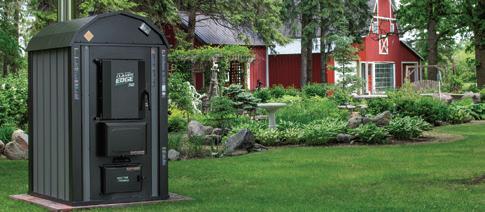
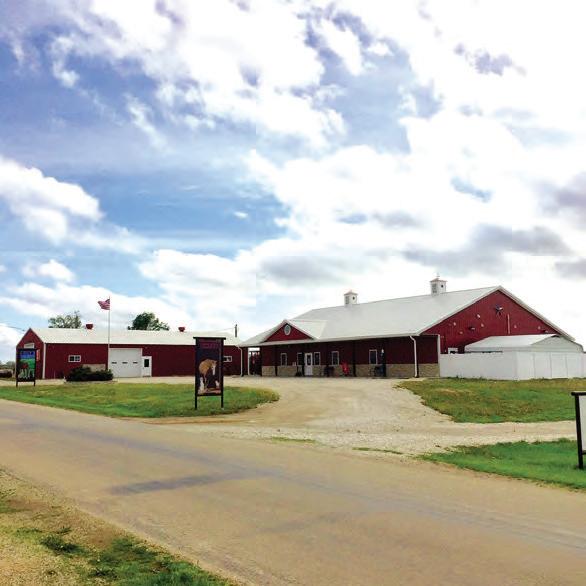









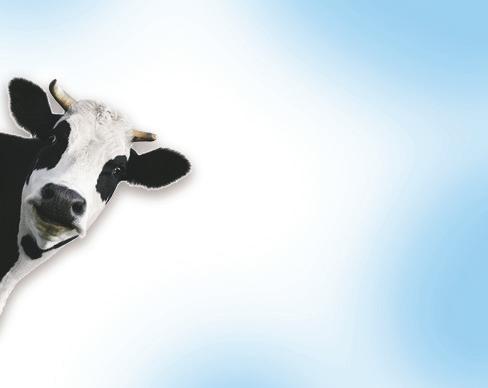



divided by weight.
2. Meat goats must weigh a minimum of 55 lbs. to be eligible for Grand Champion. An underweight class will be offered for all goats weighing less than 55 lbs.
3. Must have milk teeth in place and must be less than 1 year of age.
4. It is recommended meat goats be dehorned or have horns topped to no less than the diameter of a dime at the end. Horns should not be sharp pointed.
5. Individual animals cannot be shown in both a market and breeding classes.
6. All does will be weighed and classes broken by weight.
• Meat Goat
• Breeding Meat Goat, age 12 months and under
• Breeding Meat Goat, age 13 months to 24 months
Superintendent Sussie Sharp
1. A poster, notebook, or display showing and describing something learned in 4-H.
2. Shooting sports:
a. An exhibitor may make only one entry in this division.
b. Exhibits in this division are open to educational displays or promotional posters. Follow copyright laws as explained in the General Rules as you are preparing for your exhibit. Take care to select durable materials to withstand State Fair conditions.
c. No “live” ammunition containing propellant or explosive powders may be used in any display. An inert substitution must be used in lieu
of powder and “live” ammunition, the substitution must be clearly described on the back of the poster, display or in a notebook.
• Civic Engagement
• Communications
• Environmental Science
• Exploring 4-H
• Family Studies
• Health and Wellness
• Leadership
• Performing Arts
• Pets
• Reading Adventures
• Safety
• Self-Determined
• Shooting Sports
• Veterinary Science
Superintendent April Kroenke
1. Photos are to be mounted across the narrow (11”) dimension of an 11”x 12-1/2” sheet of white or cream studio matte board.
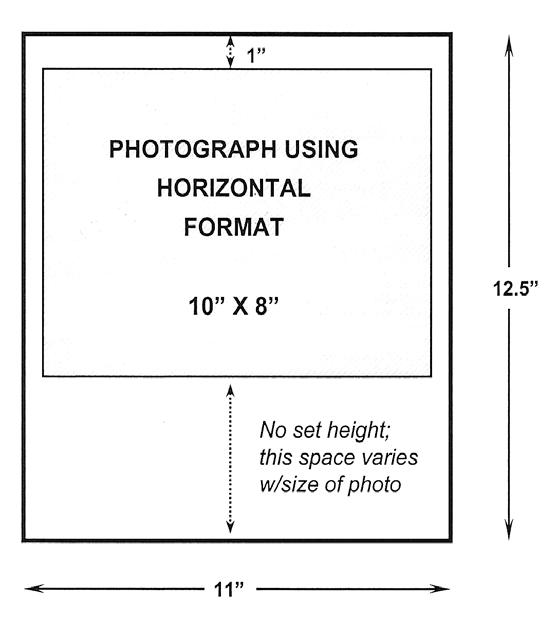
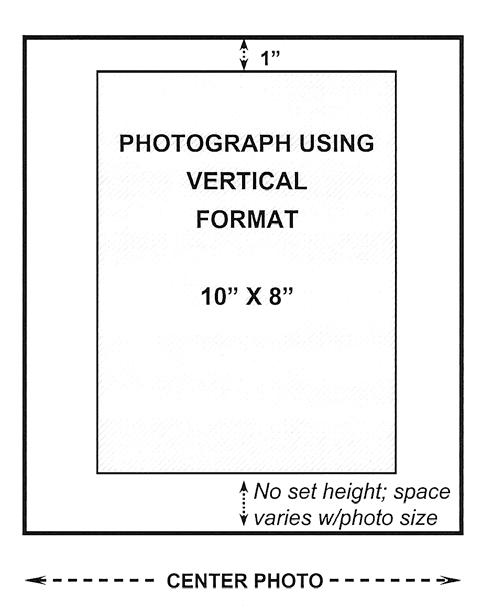
Mounting boards may be purchased in the Extension Office. (Note mat board dimension.)
2. All photos must be no larger than 8”x 10” and no smaller than 7”x 9” after trimming.
3. Photos must be mounted with the top edge of the print 1” below the top of the mount. (Board is always oriented narrow side up). The sides of the print must be equal distance from the two sides of the mount. (Note mounting location.)
4. A permanent mount must be made by using photographic adhesive. Remove white border from the enlargement before mounting.
5. No lettering, including dates, is permitted on the front of the mount or on the photo, only on the form provided. No underlays or borders are to be used.
6. To protect exhibits from dust and moisture, place mounted photos in protective plastic bags.
7. The exhibitor’s name and photo class should be written on the back of the mount.
8. Improperly mounted photos, oversize or undersize photos with white borders not removed or lettering (including dates) on the photo, will be awarded a ribbon one placing lower than the placing determined by the judge.
9. Photographs taken with a digital camera and having no more adjustments than exposure, color intensity or correction, redeye removal, cropping, dodging and burning should be entered in standard color or black and white classes.
10. The black and white class is for black and white prints only. Monochromatic prints, including
sepia prints, are considered color photos and must be entered in the appropriate color photo class.
11. Exhibitors, age 9 by Jan. 1 of the current year, winning a purple ribbon are eligible to exhibit at the Kansas State Fair with limitations based on years in the project.
12. Photos with live subject(s) on a railroad right of way or taken from railroad right of way property will not be displayed in Kansas 4-H Photography and will be disqualified and not judged.
13. Special awards will be presented to those photos that fit the themes of Patriotic and Vacation.
14. Up to four photos of any class combination are allowed.
• Color photo
• Black and white photo
Superintendent Kim Bartlett
1. Each exhibitor is limited to two entries per vegetable or crop class.
2. All entries should be displayed on a disposable plate.
3. All exhibits to be mounted on 8-1/2”x11’’ heavy stock paper and placed in loose leaf binders. (Magnetic or adhesive filler sheets for photographic prints are recommended.)
4. Forestry:
a. Name, club, age, and year in the project should be on the front cover.
b. Prepare a label and place it in the lower right-hand corner of the page. Label should include proper common name as listed in the 4-H bulletin 34, “List of Native Kansas Forest Trees”; location
(county) where collected, and date (day, month, year) collected.
c. Exhibit only in phase(s) enrolled.
d. Link to Kansas State Fair Book for required rules: www. kansas4-h.org/events-activities/ fairs/kansas-state-fair/index.html
• Ten ears corn, yellow
• Ten ears corn, white
• One-gallon barley
• Ten heads hybrid grain sorghum
• One-gallon wheat (list variety)
• 6” flake from square bale alfalfa hay or 10” section from round bale alfalfa hay
• 6” flake from square bale grass hay or 10” section from round bale grass hay
• All other hay
• Ten ears of popcorn
• Soybeans (plant 4” sheath)
• Forage sorghum — Entire plant, no roots
• Sunflower (3 heads)
• Beginning: Exhibit leaves of 10 different native Kansas trees, or leaf, twig and fruit of five different trees.
• Intermediate: Exhibit leaves of a minimum of 20 (includes at least 10 new in addition to previously collected) different native Kansas tree leaves.
• Senior: Exhibit leaves of a minimum of 25 (includes at least 5 new) different native Kansas trees or leaf, twig, and fruit of 10 different trees (includes at least 5 new).
• Advanced: Exhibit leaves of a minimum of 40 (includes at least 20 new and 20 from previous classes) different native Kansas trees, or leaf, twig and fruit of 20
(includes 10 new and 10 from previous classes) different trees.
• Annual Garden Flower, cut specimen, single stem
• Perennial Garden Flower, cut specimen, single stem
• Fresh Flower Arrangement. Flower materials must be grown and/or collected by the exhibitor and not purchased.
• Dried Flower Arrangement, no fabric or plastic material allowed Potted Plant, best of its kind (not eligible for state fair entry)
• Entry shall consist of a notebook or three ring binder of written narrative describing a horticulture project. 4-H’ers are encouraged to include photographs, illustrations and/ or landscape drawings that help explain work done by the member. Photos taken from the same location before, during and after the completion of the project are particularly helpful.
• Vegetable Garden Display. Each exhibitor in this class will be limited to four square feet of space. Exhibit consists of five different fresh vegetables. Canned vegetables are not accepted. Only one variety of each type of vegetable may be exhibited. The numbers of the five vegetables are as follows: Large Vegetables (one each): cabbage, squash, pumpkin, eggplant, cantaloupe, watermelon or similar size vegetable. Medium Vegetables (five each): beets, Irish potatoes, tomatoes, onions, peppers, cucumbers,
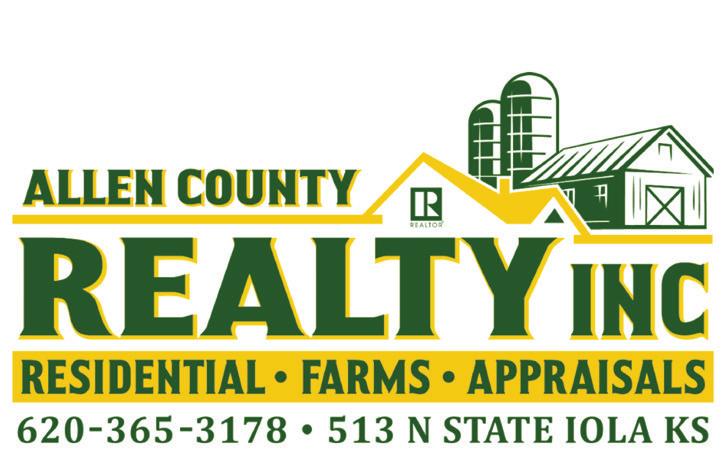



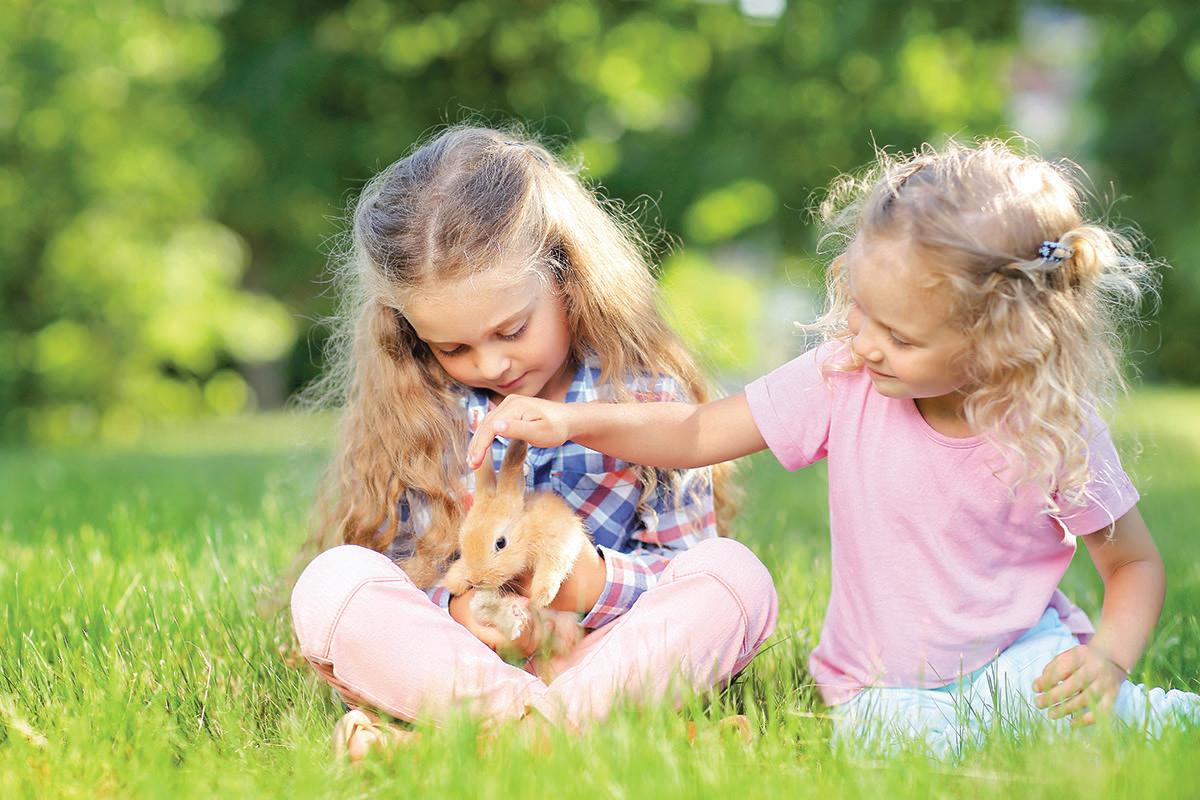






okra, carrots, sweet potatoes, or similarly sized vegetable.
• Display should be exhibited in a tray, basket or container that can be easily moved by the fair staff. If small, fresh vegetables, such as green beans, are used as one of the five different vegetables, a dozen is suggested for a good display. Shelled vegetables should not be exhibited. Quality and condition of exhibit will be considered. Choose vegetables for exhibit that will hold up well during the fair. Avoid over-ripe or overmature specimens. Those that are slightly under-ripe or slightly immature when picked may last longer.
• Small vegetable specimen plate. (12) Ex: green snap beans, yellow wax beans, other small vegetables.
• Medium vegetable specimen plate. (5) Ex: cucumbers, cherry tomatoes, tomatoes, beets, white onions, yellow onions, red onions, bell peppers, other peppers, okra, parsnips, turnips, sweet potatoes, red potatoes, white or Russet potatoes, carrots, other medium vegetables.
• Large vegetable specimen plate. (1) Ex: watermelon, summer squash, winter squash, pumpkin, eggplant, cabbage, cantaloupe, and other large vegetables.
• Fresh Culinary Herbs (6) Ex: parsley, basil, dill, etc. Six stems (or comparable quantity) of ONE VARIETY of fresh herbs exhibited in a disposable container of water. Dried herbs are not accepted.
• Small fruits (1 half pint box) Ex: strawberries, blackberries, raspberries, or other similarly sized fruits.
• Tree fruits (5) Ex: apples,
pears, peaches or similar sized fruits.
• Grapes (Plate of 2 bunches)
Superintendent
JD Wilks1. Only 2 pens of birds per class.
2. The KDA has changed the requirements on having poultry tested for County Fairs. Birds exhibited at the county fair that originate from Kansas do not need to be tested before the fair until 2027. Birds will then be tested every 5 years. If your bird comes from out of state you will be required to test within 90 days of the fair.
3. Poultry must be in place by noon on Thursday.
• Standard Breeds - Large Fowl; One old bird of either sex
• Standard BreedsBantams; One young bird of either sex
• Standard BreedsBantams; One old bird of either sex
• Production Pullets - Pen of 3. Standardbred, crossbred or strain cross pullets to be judged on egg production qualities
• Production Hens - Pen of 3. Standardbred, crossbred or strain cross hens to be judged on egg production qualities
• Dual Purpose Pullets - Pen of 3. Such as Rhode Island Reds, New Hampshire, Plymouth Rocks, etc.
• Dual Purpose Hens - Pen of 3. Such as Rhode Island Reds, New Hampshire, Plymouth Rocks, etc.
• Turkeys - all breeds; one bird of either sex
• Ducks - Call or Bantam,
all breeds; one bird of either sex Ducks, all breeds; one bird of either sex
• Geese - all breeds; one bird of either sex
1. Each Allen County 4-H exhibitor may exhibit 10 rabbits plus one meat pen of 3 rabbits.
2. Not more than 2 animals per breed per class and a maximum of 8 in one breed.
3. Rabbits must be permanently tattooed in the left ear for identification. Not required to tattoo meat class.
4. Rabbits must be in place by noon on Thursday.
5. All rabbits will be divided into classes by ages and judged according to their breed standard as listed in the ARBA “Standard of Perfection.” Only breeds approved by ARBA may be shown, no mixed breed rabbits will be allowed.
• Senior Buck (8 months and up)
• Senior Doe (8 months and up)
• Intermediate Buck (6-8 months)
• Intermediate Doe (6-8 months)
• Junior Buck (3-6 months)
• Junior Doe (3-6 months)
• Pre-Junior Buck (0-3 months)
• Pre-Junior Doe (0-3 months)
• Meat Pen. Three (3) rabbits, all one recognized breed and variety (broken varieties must be the same color). Minimum weight 3 1/2 pounds each. Maximum weight 5 1/2 pounds each, and not over 70 days of age. Will be
judged on their meat qualities, condition, uniformity and fur.
1. There is no limit as to the number of sewing and textile design articles/garments/outfits that may be entered. Exhibitors can model two shopping in style outfits during judging, but only one shopping in style garment at public revue.
2. One educational exhibit may be entered.
3. All work must be the product of the current year’s club work.
4. Clothing will be judged Tuesday at the Fairgrounds Community Building. Paperwork can be found here: www. southwind.k-state.edu/fairs/ allen-county/index.html
5. Label each piece as follows:
a. Use a 3x2-1/2” piece of cloth. Sew or pin label to the center back of the neck or center back of the waistband.
b. Label must contain name and club.
6. All clothing & textiles classes will be judged by age divisions of: Junior (Ages 7-9), Intermediate (Ages 10-13), and Senior (Ages 14-18).
7. All garments on display at the fair must be placed on a hanger and ready for display.
8. Constructed garments receiving a purple ribbon are eligible to be entered at the state fair, but an individual may enter only one constructed piece and one educational exhibit and must be 10 by Jan. 1 of the current year.
9. Definition for educational
exhibit: If a poster, it must be no larger than 22”x28.” May be a notebook or other display. Total display space must be no more than 12” high by 12” deep and 18” long. No card table displays are allowed. Take care to select durable materials that can withstand fair conditions.
10. The shopping in style outfit must be purchased and modeled by the exhibitor.
11. Shopping in style garments do not have to be exhibited at the county fair but champions in each division are encouraged to be on display.
• Item, article or garment
• Educational exhibit
• Recycled clothing project
• Revue
1. Posters can be flat poster board or foam board, no larger than 22” x 28”.
2. Tri-fold educational displays must be free standing and no larger than 36” x 48”.
3. Photos of 4-H member in purchased outfit must demonstrate criteria as outlined on scoresheet. Consider multiple angles, good light and highlight details so that the judge may accurately evaluate the exhibit.
4. Exhibits should include actual photos of 4-H member in garments and may also include pictures from magazines or the internet.
• Boys Revue
• Girls Revue
• Shopping in Style: Junior (ages 7-9) Exhibit should consist of poster that showcases (choose one): A. a garment you purchased
that reflects your personal style and explains how this garment reflects your style and how it influences what others think of you; OR B. a garment you purchased and explains how your personal style either aligns or contradicts what is considered to be “in style” today. OR C. a garment you purchased and explains or illustrates how this garment is a modern version of a fad or fashion from an earlier decade; OR D. a garment you purchased and explains how this garment reflects a different ethnic or cultural influence; OR E. a garment you purchased and includes a color discussion that provides an overview of how different colors complement different hair colors and skin tones and how that influenced garment selection.
• Shopping in Style: Intermediate (ages 10-13) Exhibit should consist of a display that showcases (choose one): A. an outfit you purchased to wear with a clothing item that was already in your wardrobe that still fit but you didn’t wear anymore. Explains why the clothing item was not being worn and what you did to transform it into a wearable garment again. OR B. a top and bottom that you purchased, as well as at least three pieces of clothing in your existing wardrobe that you can mix and match with the new items to create multiple outfits. Includes a clothing inventory and explains what you have learned by completing this activity. OR C. an outfit you purchased and explain why you selected the garment you did, your shopping budget, and cost per wear; OR D. an outfit you purchased and explain how advertising influences clothing
purchases making a distinction between wants and needs. Include your shopping budget and cost per wear. OR E. an outfit you purchased along with a cost comparison between garments/ accessories purchased vs. sewing/constructing the outfit. Comparison should include a variety of shopping options and/ or price tracking at stores over a period of time.
• Shopping in Style: Senior (ages 14-18) Exhibit should consist of a display that showcases (choose one): A. an outfit you purchased and care requirements not only for this garment but also for garments made of other natural and synthetic fibers. Display should also include a care cost analysis for garments of different fibers; OR B. an outfit you purchased which you have repaired or altered. Include a clothing inventory list which includes cost savings for repaired items as compared to purchasing replacement garments; OR C. an outfit you purchased along with plans and commentary for a fashion show that that would capture the attention of an audience. Plans should identify target audience, venue, theme, budget, and logistical plan for the fashion show; OR D. an outfit you purchased and explain 3 methods of clothing repair that you have learned, i.e. torn seam, torn hem, replacing a button, etc. Display should also include photos and list of your assembled clothing first aid kit. Include itemized expenses; OR E. An outfit you purchased and feature any other completed activity from the Shopping In Style curriculum of your choosing that isn’t listed above.
Superintendent Sherry Elmenhorst
1. Market lambs to be shown by breed and weight.
2. Market lambs must weigh a minimum of 95 lbs. to be eligible for Grand Champion and to sell in the Premium Auction. An underweight class will be offered for all lambs weighing less than 95 lbs.
3. All lambs must be identified by a USDA scrapies tag.
4. Individual animals cannot be shown in both a market and breeding class.
• Aged Ewe (born before Jan. 1 of current year)
• Ewe Lamb (born after Jan. 1 of current year)
MARKET CLASSES
• Suffolk
• Hampshire
• Dorset/Speckleface
• Crossbred
• Natural (blue/gray)
• AOB
Superintendent
Jeff Nemecek1. Market hogs to be shown by breed and weight.
2. Market swine must weigh a minimum of 230 lbs. to be eligible for Grand Champion and to sell in the Premium Auction. An underweight class will be offered for all swine weighing less than 230 lbs.
3. Individual animals cannot be shown in both a market and breeding class.
4. Electricity will be allowed only in designated dry pens. If you choose to use pens with
misters, then you may not use fans, clippers, etc.
BREEDING CLASS
• Breeding Gilt
MARKET CLASSES
• Duroc
• Hampshire
• Yorkshire
• AOB
• Crossbred
4-H VISUAL ARTS
Superintendent Jennifer Jackman
1. All exhibits that need to be hung must have a wire or saw tooth hanger attached in order to be properly displayed. If not ready to hang, the placing will be lowered by one ribbon.
2. Exhibitors may enter up to 6 items in the class or classes of their choice but no more than 6 items total.
3. Copyrighted kits and preformed molds are not considered original and are not acceptable in any Visual Arts Class. Combining parts of different patterns (pictures, photographs, images from the internet or a magazine) with the member’s own ideas can result in an original design, but simply changing the color, pattern, and/or size of a pattern does not make the design original. If you create a replica of what you see somewhere else (e.g. Pinterest), it is not your original design. If a photo, sketch, or other idea source was used, submit it with your entry, firmly attached to your exhibit.
• Fine Arts. Oil, chalk, charcoal, dyes, pastels, pencil, ink, acrylic, or watercolor on canvas, canvas board, paper, wood, metal, or textiles, framed as a picture,
prepared for hanging. Stretched canvas art on a wooden frame is considered prepared for hanging provided that frame has a hanger.
• Clay and Ceramics. Any original item made of clay; may be fired or unfired, hand formed, or thrown on a wheel. Selfhardening, fire/oven-cured, and/ or cornstarch clays are acceptable. Items can include, but are not limited to, clay statues, bowls, etc.
• Leather and Jewelry. Any leather stamping, carving, tooling, lacing, or stitching piece or any jewelry piece made from any medium are acceptable exhibits.
• Three-Dimensional. The piece must be observable on at least three sides and should be either free-standing or prepared to be hung. Craft and pre-formed or assembled projects are not acceptable.
• General Crafts. This category incorporates miscellaneous pieces that do not correspond to the four categories mentioned above.
1. Exhibitors must comply with state and federal laws. It is illegal to possess threatened or endangered wildlife, or the feathers, nests, or eggs of nongame birds. Game birds and game animals taken legally during an open season may be used. The use of wild animals in educational exhibits is prohibited.
2. KSRE, 4-H Youth Development and the Kansas State Fair are not responsible for damage during the exhibition period.
3. Name, county or district, age and year in the project should
be in a prominent location on the exhibit.
• Notebook. Contents pertain to some phase, results, story or information about the wildlife project.
• Promotional Poster. Must be related to something learned in the wildlife project. (Flat poster board or foam board no larger than 22” x 28”)
• Educational Display. Must be directly related to the wildlife project. Maximum tri-fold size is 3’ x 4’.
• Taxidermy/Tanning Exhibit. Should include an attachment that shows the work in progress through photos with captions, or a detailed journaling of the process.
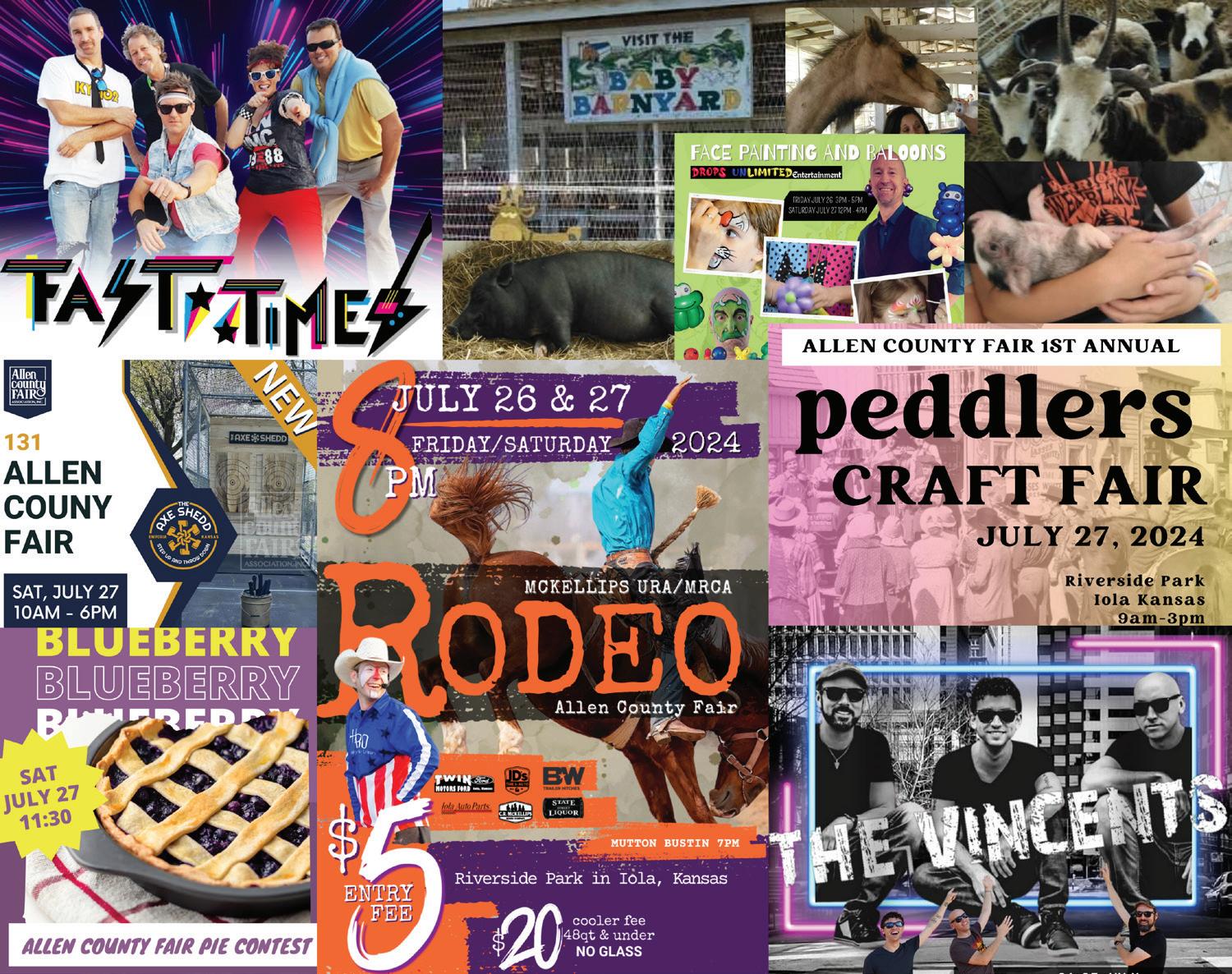

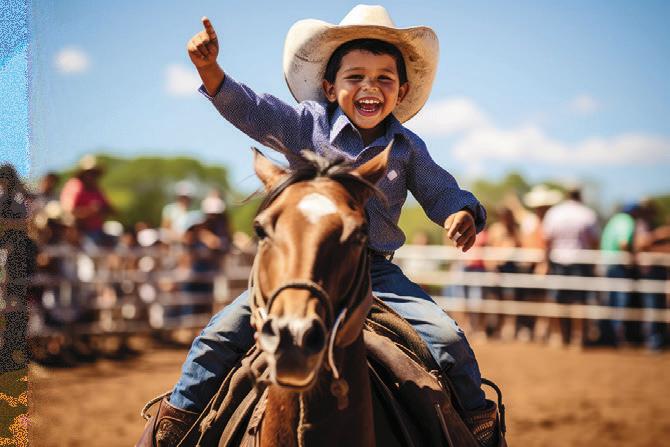
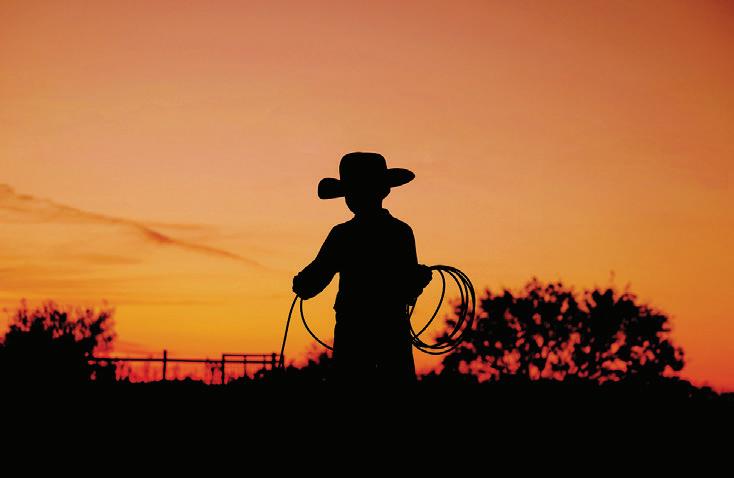


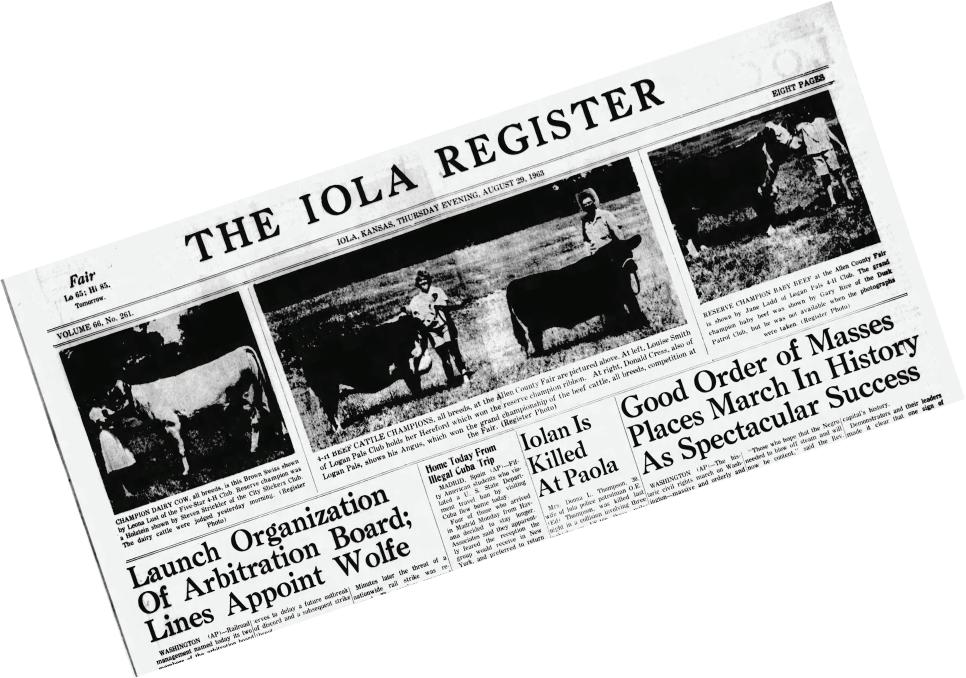
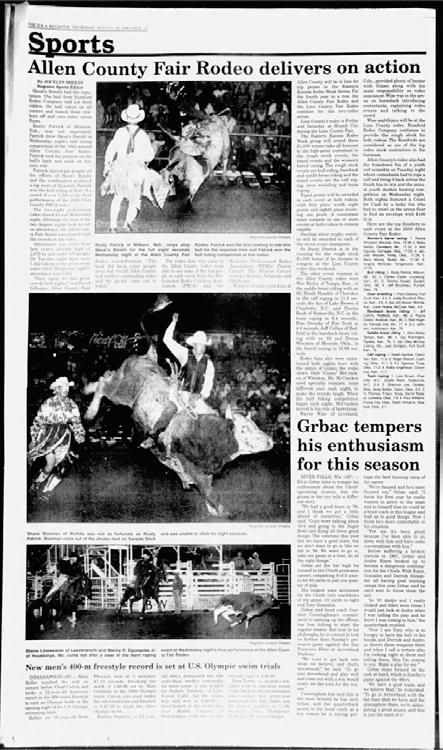














Our agricultural loans are ideal and efficient funding sources for farmers and ranchers who need money to accomplish their next big project, whether that’s through expansion, construction, or acquisition. We offer:
• 100% financing
• Competitive long-term fixed rate financing
• No prepayment penalties
• Multiple payment options
We understand the ins and outs of your farming business, no matter how big or small. Get started with the next great phase of your agriculture business. Give us a call today!
